The name ‘Alcatraz’ evokes all kinds of images and associations.
A prison.
Escape attempts.
The Rock.
An island.
Isolation.
Movies.
Dangerous and infamous prisoners.
It’s also somewhere we’d highly recommend visiting if you ever take a trip to San Francisco. Located in San Francisco Bay, we took a trip to the island while staying in The Golden City and it was well worth it.
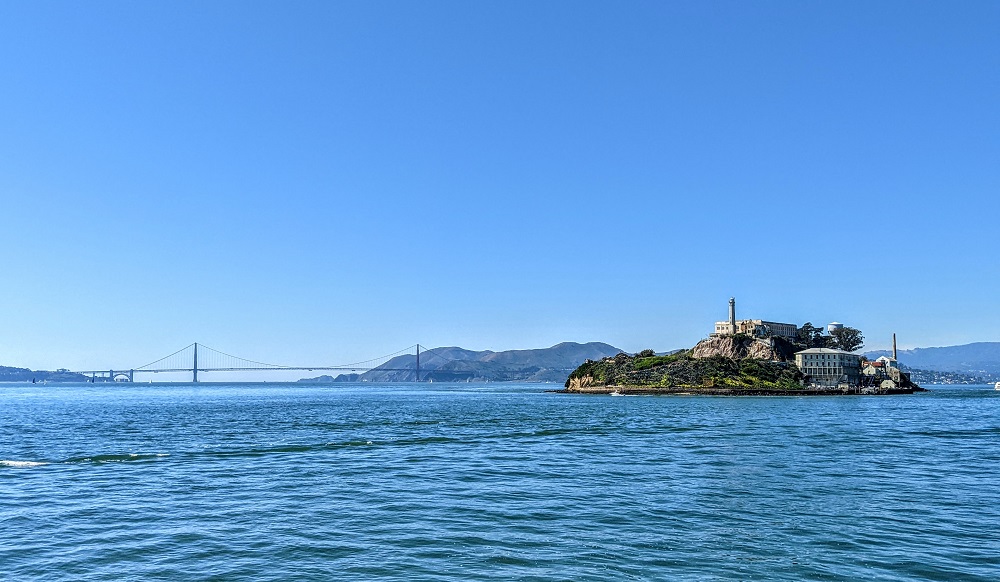
How To Get To Alcatraz
If you wander around Fisherman’s Wharf, you’ll likely see a number of signs and people offering Alcatraz cruises. The important thing to know is that all but one of those only cruise around the island – they don’t take you to the island.
Alcatraz Island is now managed by the National Park Service. They have a partnership with a private ferry company – Alcatraz City Cruises – to transport you to and from the island and that’s the only company authorized to do that. Even if you have your own boat, you’re not allowed to dock at Alcatraz to visit the prison.
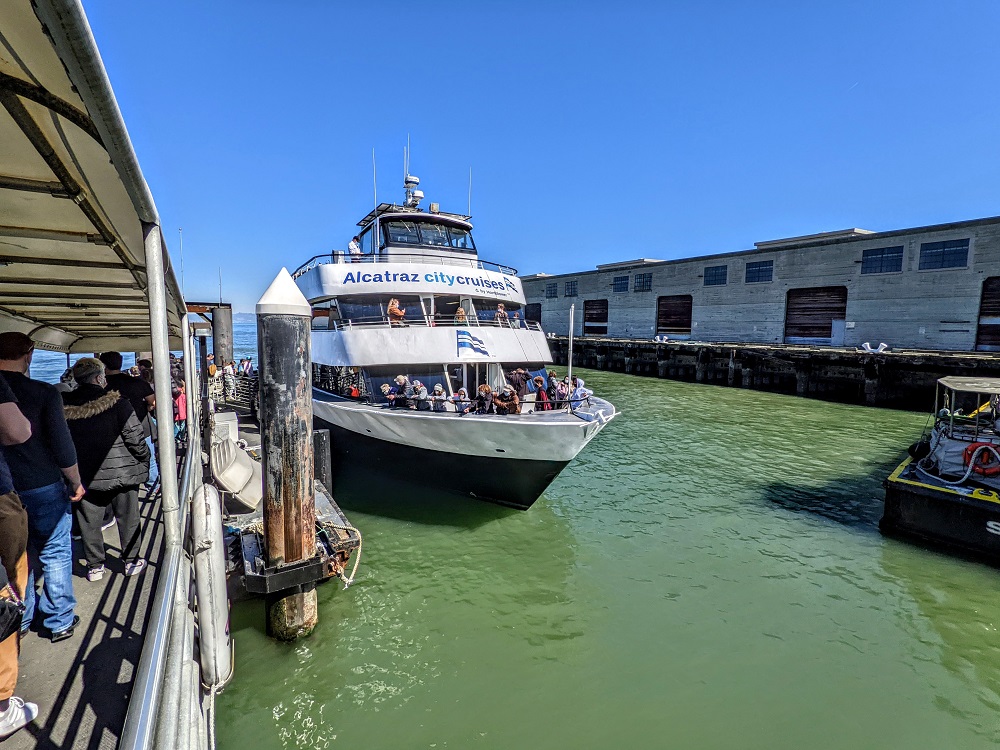
How Much Are Tickets To Alcatraz?
Entry to Alcatraz is, in theory, free because the National Park Service doesn’t charge an entry fee. However, you do have to pay to get there which means it’s not free.
Alcatraz City Cruises offers a number of ticket options. I’d recommend booking your tickets in advance as it’s a popular attraction and tickets can sell out many days in advance.
Here are the ticket prices as of March 2022 – you can buy tickets here:
Day Tour (this is the tour we did)
- Adult – $41
- Child (5-11) – $25
- Junior (12-17) – $41
- Senior (62+) – $38.65
- Family Pack (2 adults + 2 children ages 5-11) – $119.60
Night Tour (includes a guided tour)
- Adult – $48.40
- Child (5-11) – $28.60
- Junior (12-17) – $47.35
- Senior (62+) – $45.00
Behind The Scenes Tour (includes a guided tour and behind-the-scenes access)
- Adult – $93.40
- Child (5-11) – Not allowed on this tour
- Junior (12-17) – $89.35
- Senior (62+) – $87.00
Alcatraz & Angel Island Tour
They’re not currently running this tour due to health and safety restrictions. I’m not sure if that’s COVID-related or if there are some kind of on-site safety concerns.
How Long Does It Take To Visit Alcatraz?
When booking a day tour, you book a specific departure time from Pier 33. Your return time is completely flexible though – you can spend as little or as much time on the island as you want during the day. Be aware that the last ferry leaves the island at 4:25pm, so it’s better to visit in the morning or early afternoon if you want to have enough time to learn and explore the site.
I’d recommend spending at least two hours at Alcatraz in order to not feel rushed, but you may well want to spend even more time than that. Shae and I spent about 2.5 hours on Alcatraz itself, not taking into account waiting for ferries or the ferry journeys themselves.
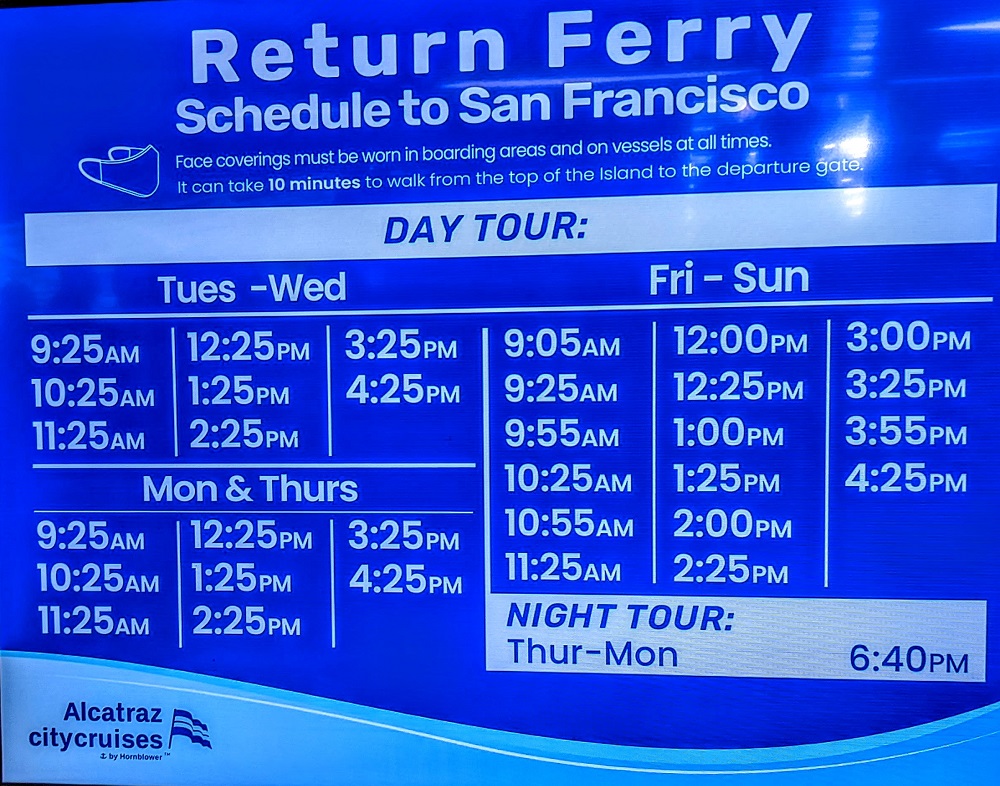
Alcatraz Ferry Journey
The ferry journey from Pier 33 to Alcatraz Island takes about 15 minutes. If the weather isn’t great then you can sit inside, but there’s also lots of seating up top to enjoy better views of San Francisco and your approach to the island when there’s nicer weather.
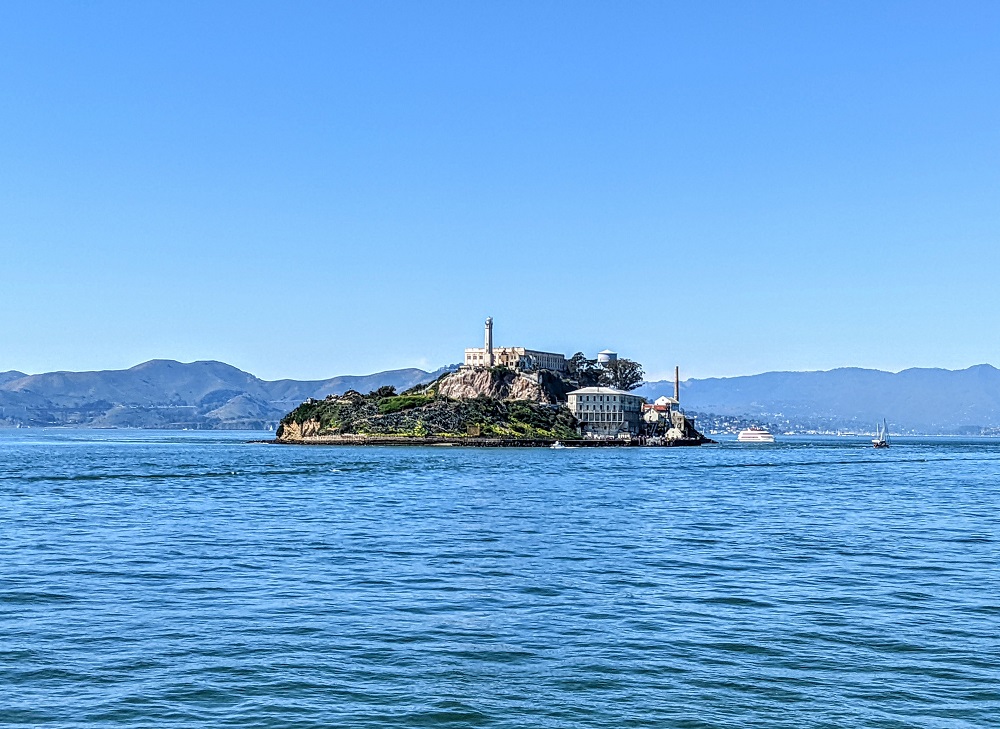
When docking at the island, you’ll see a four story building immediately in front of you. Upon arrival we assumed that was the prison itself, but it’s not – that’s the accommodation barracks. The cellhouse is at the top of the hill behind the barracks, both of which you can see in the photo below.
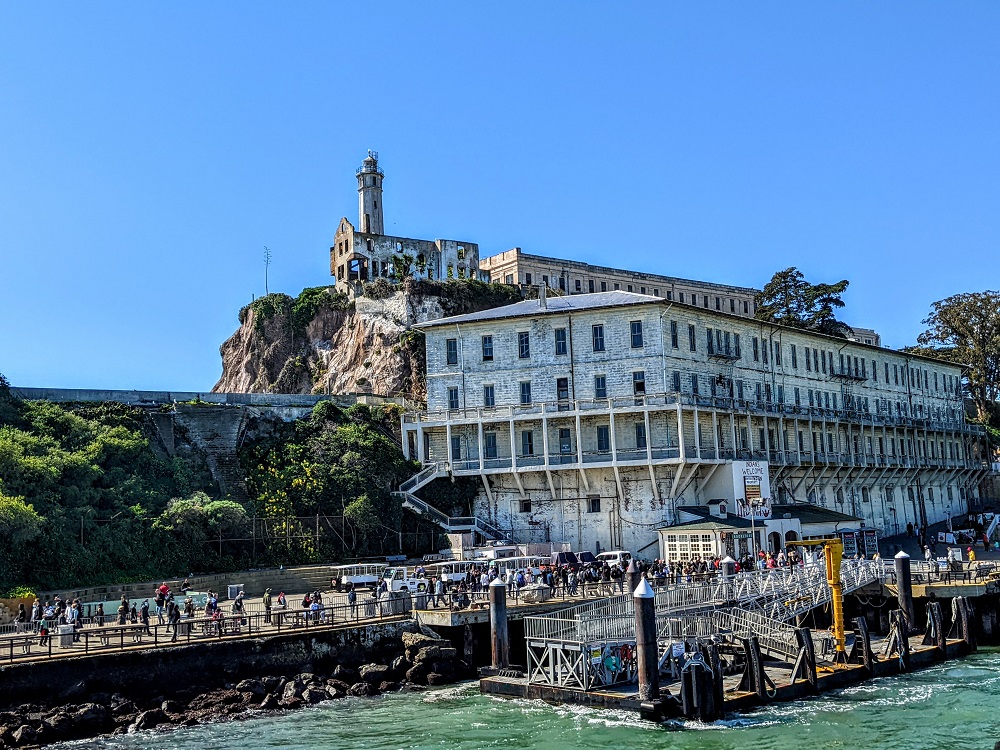
Alcatraz Tours
There are a few tours you can take once you’re on the island. If you paid for a night tour or behind-the-scenes tour, both of those include a guided tour automatically.
Once you get off the boat, there are booklets you can purchase for $1 that contain a map of the island and a guide. These come in many different languages, so it’s not a problem if English isn’t your first language.
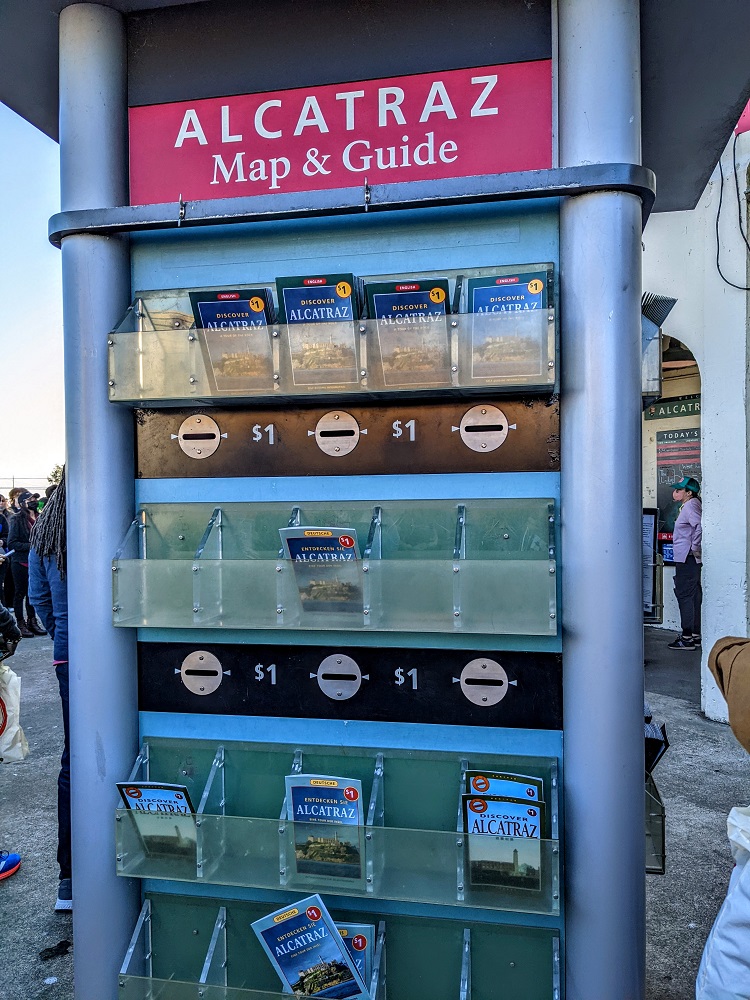

You can download an Alcatraz audio tour from here. I tried doing that while on the island, but didn’t seem to have much success despite connecting to their free Wi-Fi. In hindsight though, I don’t think that’s necessary because it seemed to be the same audio tour you get a handheld device for later.
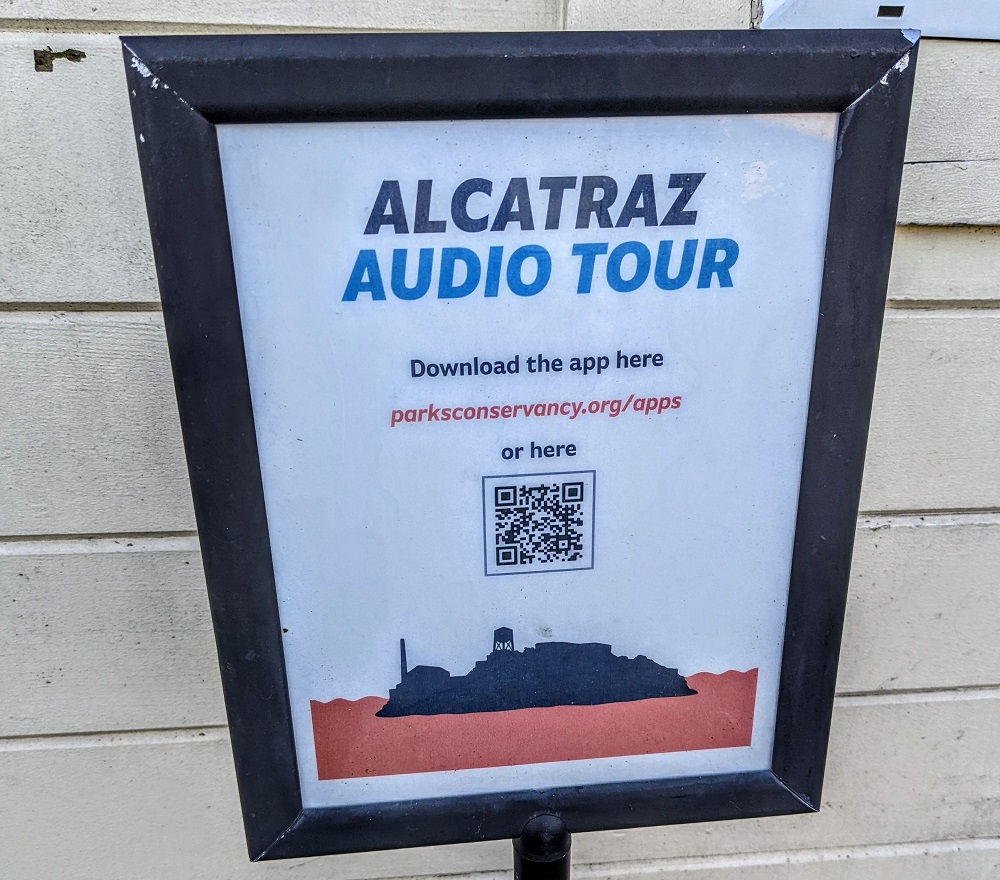
The National Park Service runs several complimentary ranger-led tours throughout the day. We arrived on the island at about 1pm, so we wandered around a little outside before heading to the 1:40pm Behind These Walls talk.
The ranger was very interesting and engaging, giving a lot more history and context of people imprisoned on Alcatraz – both as a maximum security prison and its earlier incarnation as a military prison. We didn’t stay for the whole talk as it was due to last about 30 minutes and we weren’t sure how much time we’d need to explore everything else.
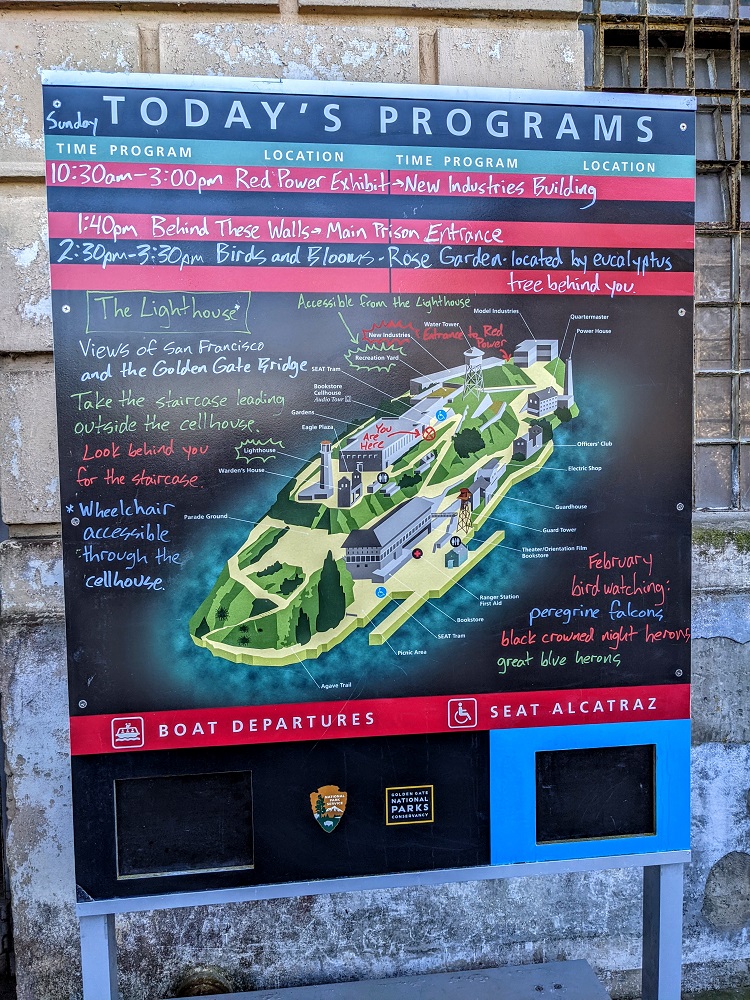
Once you get up to the cellhouse, you can borrow a handheld device which provides an audio tour in many different languages. The audio tour is included in the ticket price from Alcatraz City Cruises, so there’s no additional cost to borrow the device once you’re there.
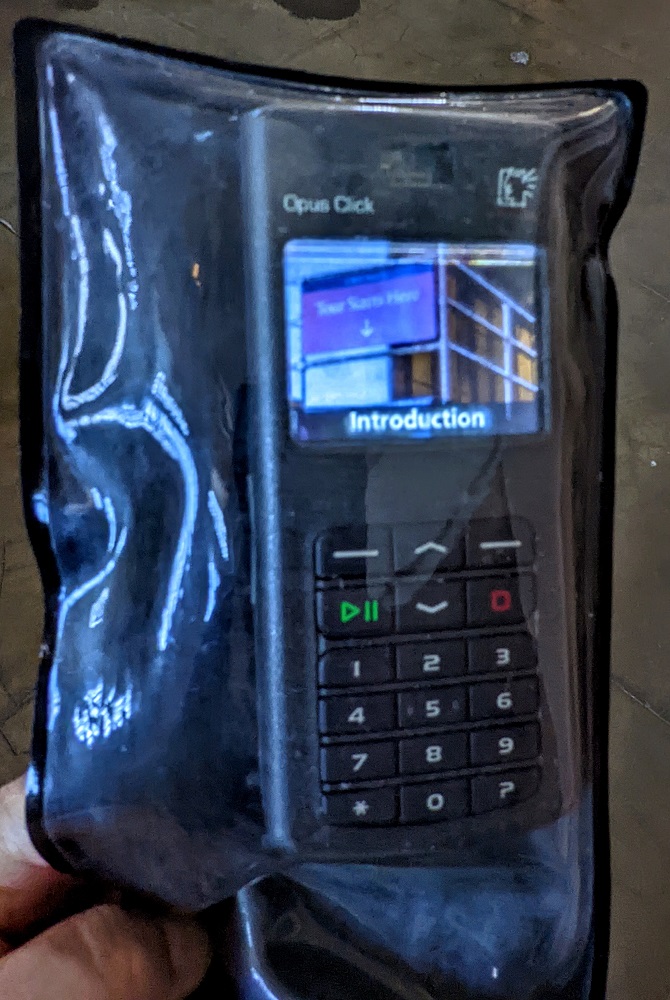
The audio tour is fantastic. It gives clear instructions as to where you need to walk in order to see whatever it is the audio tour is about to describe. You can also pause it as often as you need. After pressing play again, the audio doesn’t start for a second or two; that was an unexpectedly excellent feature because it gives you time to put the device back up to your ear to ensure you don’t miss anything and have to rewind.
Much of the tour is narrated by the same person, but there are also contributions from former prisoners and guards who share their own experiences.
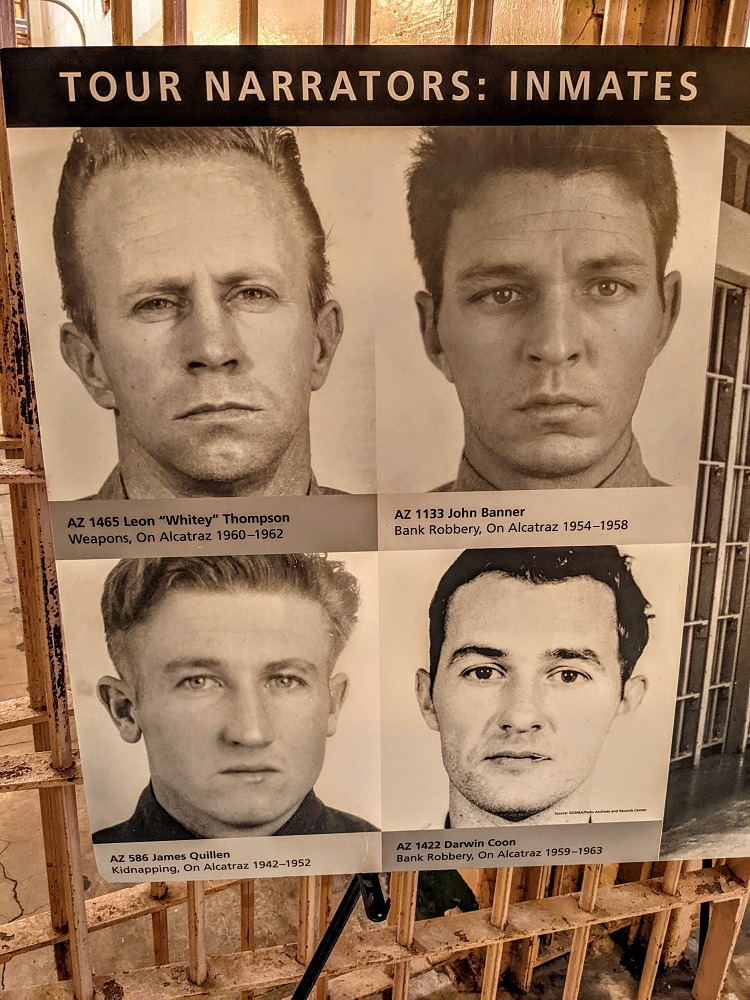
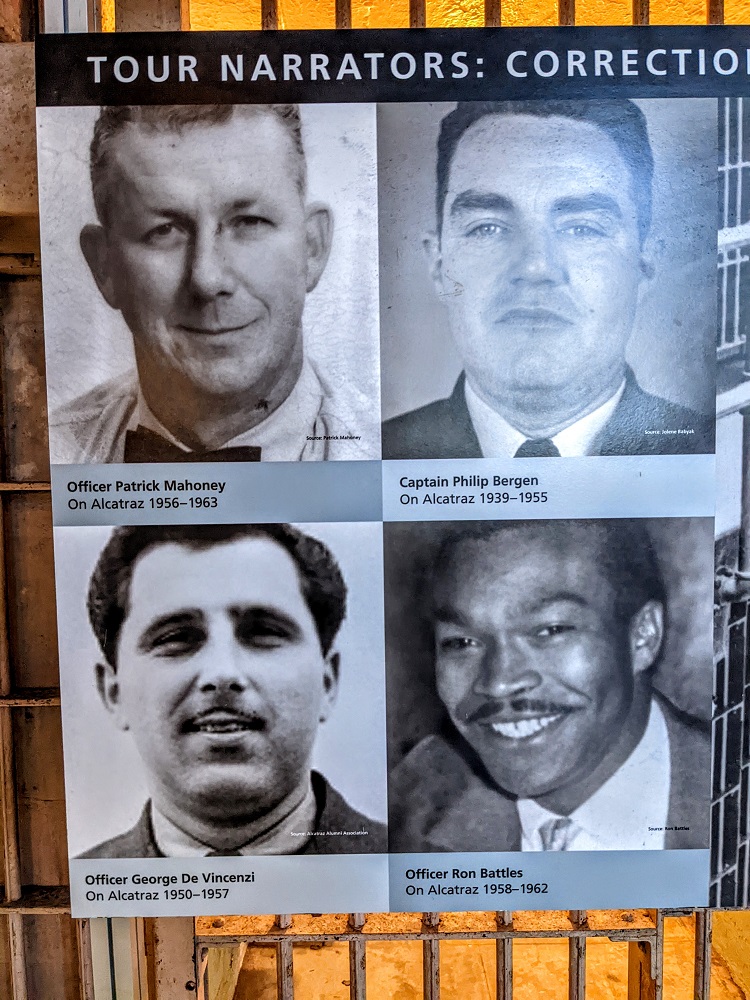
Alcatraz Cellhouse
Just before entering the cellhouse, we saw where new inmates collected their prison-issued clothing known as “Alcatraz Blues”.
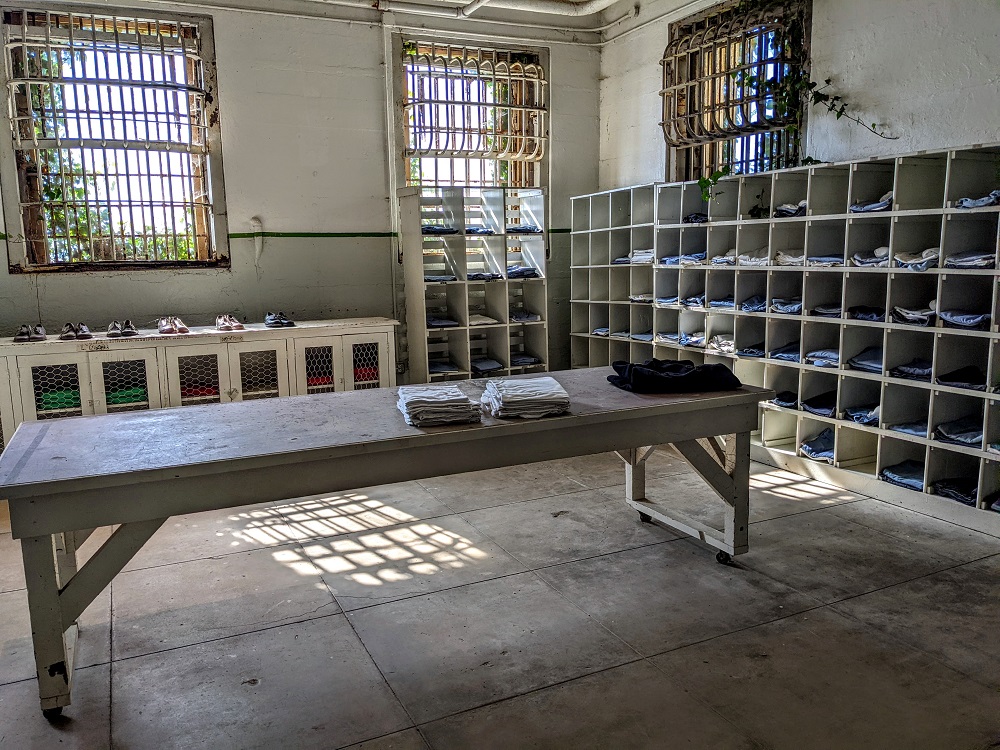
We then went past the 40 showers that inmates at Alcatraz used. Before the 1950s there were separate stalls, but those were subsequently removed to allow guards to more easily oversee inmates and protect them from assault.
While incarcerated at Alcatraz, prisoners were allowed to shower twice per week.
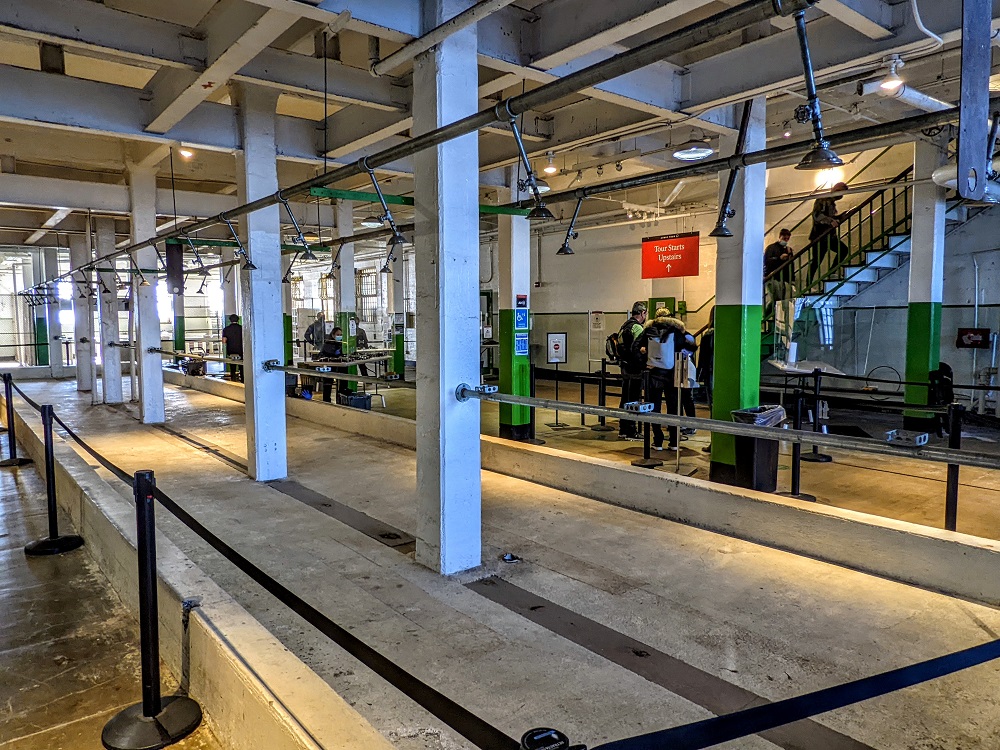
The tour then takes you through to one of the cell blocks in the prison.
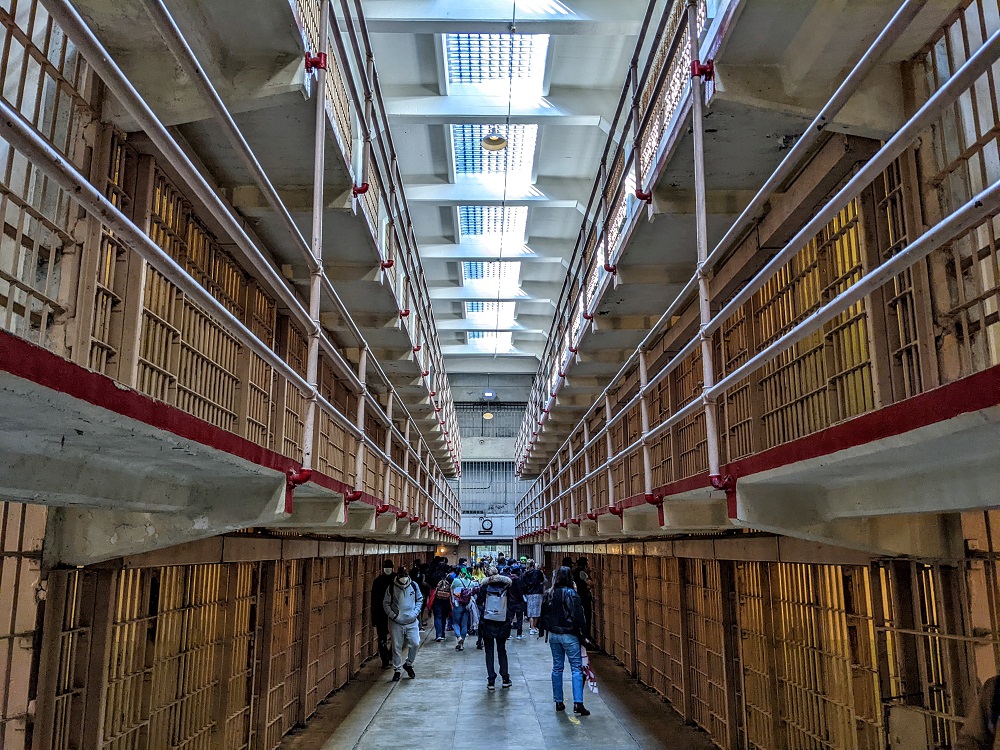
The cell that greeted new inmates was quite bare. There was a narrow bed, toilet, sink, a couple of shelves and a wall-mounted table and chair that could be folded down.
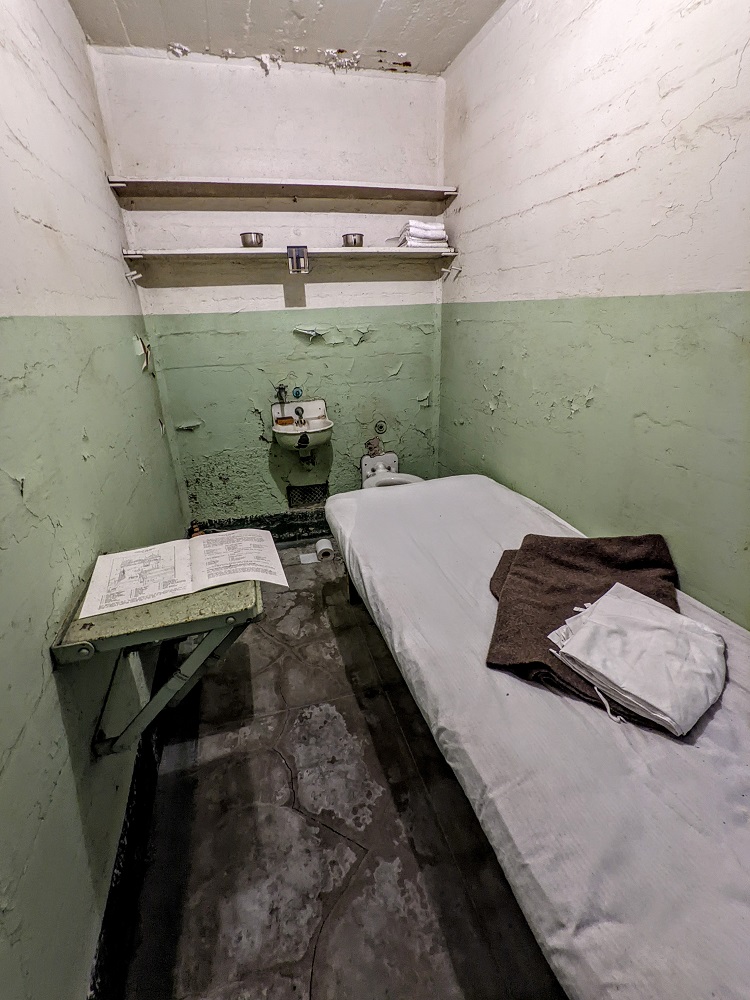
The recreation yard at Alcatraz has stunning views from the bleachers which presumably made incarceration even harder as you could see what you were missing out on. Prisoners who were part of gen pop (general population) were allowed into the recreation yard for 2.5 hours per day on Saturdays and Sundays.
Prisoners who had been moved to the Treatment Unit on D Block due to their behavior had more restrictive recreation time. They were only allowed outside for one hour per week and even then it was usually alone.
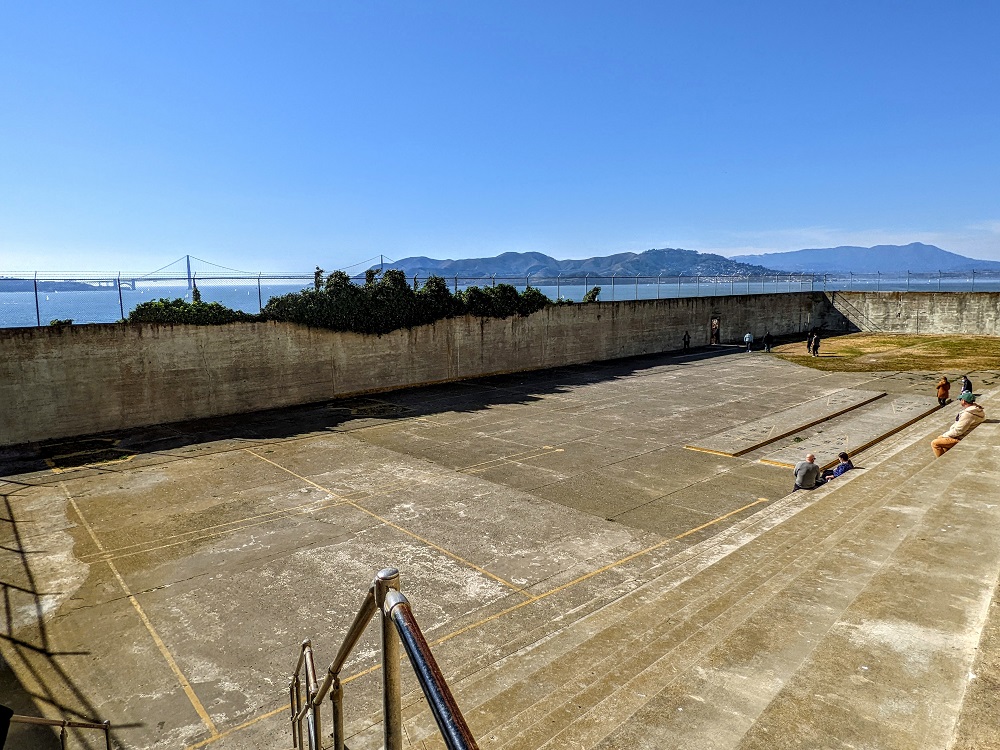
Speaking of prisoner behavior, unruly and/or violent prisoners were sent to D Block, also known as the Treatment Unit, where they were kept in isolation.
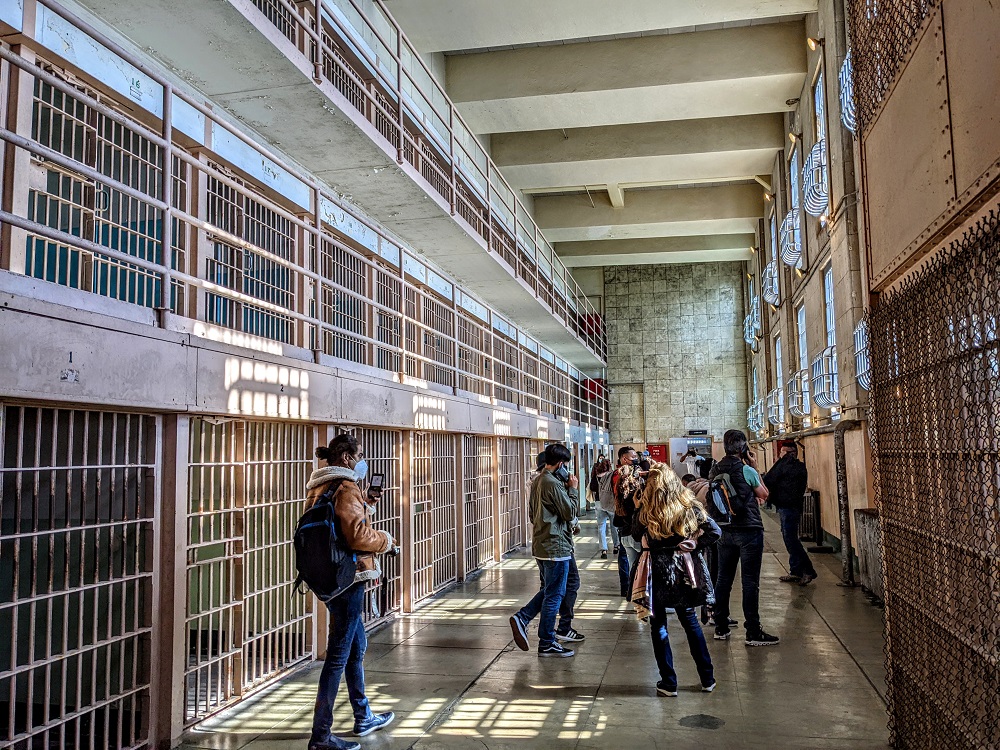
When checking out their cells, it seemed surprising that inmates with bad behavior were sent to this block because the cells were larger than those in gen pop.
Even though their cells were larger, this wasn’t somewhere you’d want to be. D Block was cold and damp, with the wind whistling through the block. Prisoners in D Block were also confined to their cells 24/7, with meals being served in their cells. They only got to leave their cells once a week to shower for ten minutes and use the recreation yard for an hour.
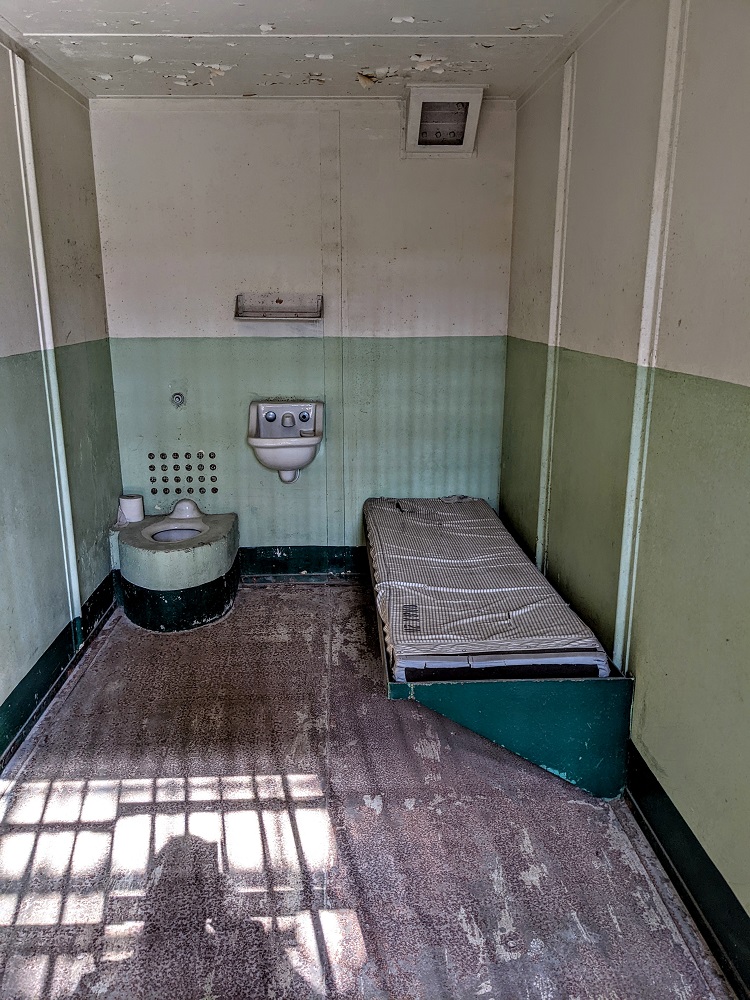
I’d assumed that isolation would’ve been used for particularly egregious behavior – perhaps for attacking prison guards or other inmates, trying to escape, etc.
That wasn’t always the case though. There was a display giving examples of behavior that got people put in solitary confinement and some of the reasons were surprising.
For example, there’s this inmate with the last name Sanchez.
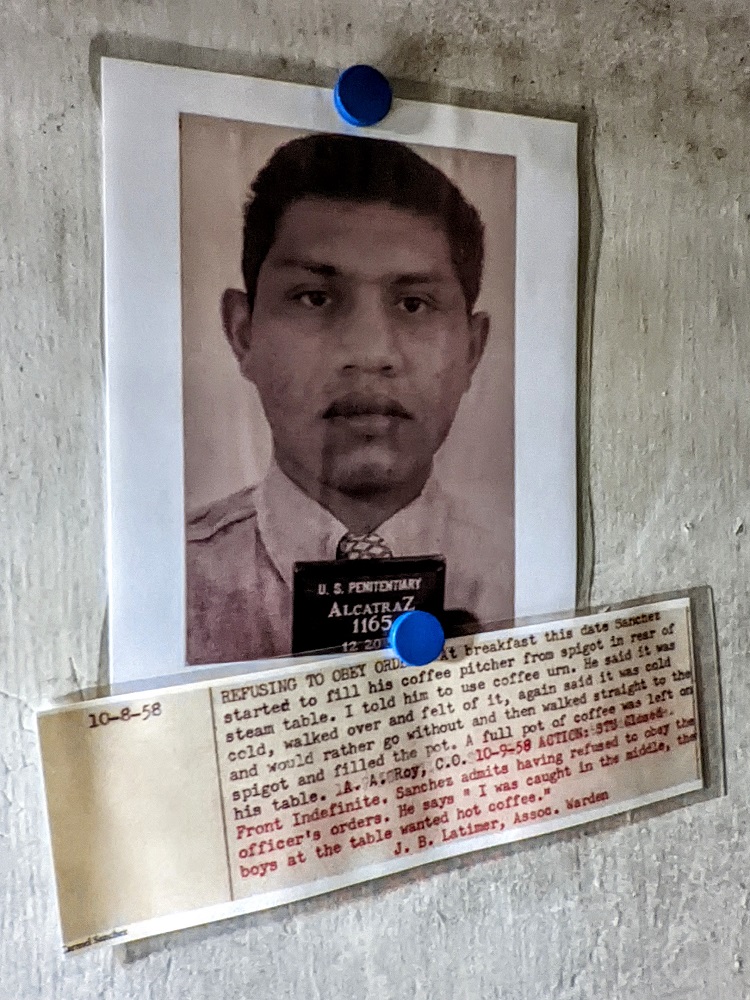
In case you can’t read the text, here’s what it says:
10/8/58
Refusing To Obey Orders
At breakfast this date, Sanchez started to fill his coffee pitcher from spigot in rear of steam table. I told him to use coffee urn. He said it was cold, walked over and felt of it, again said it was cold and would rather go without and then walked straight to the spigot and filled the pot. A full pot of coffee was left on his table.
Sanchez admits having refused to obey the officer’s orders. He says “I was caught in the middle, the boys at the table wanted hot coffee.”
As a result of his actions, he was sent to the Treatment Unit for an indefinite amount of time.
Particularly bad behavior could get you put in solitary confinement, also known as “The Hole”. Those cells were smaller than others in D Block and had no bed inside – only a sink and a toilet. Inmates in those cells were sometimes kept in total darkness and given a restricted diet. Their bed consisted of a couple of blankets – no mattress.
Although some prisoners spent several years of their incarceration on D Block, use of the The Hole only tended to last a few days, although it could stretch to almost three weeks.
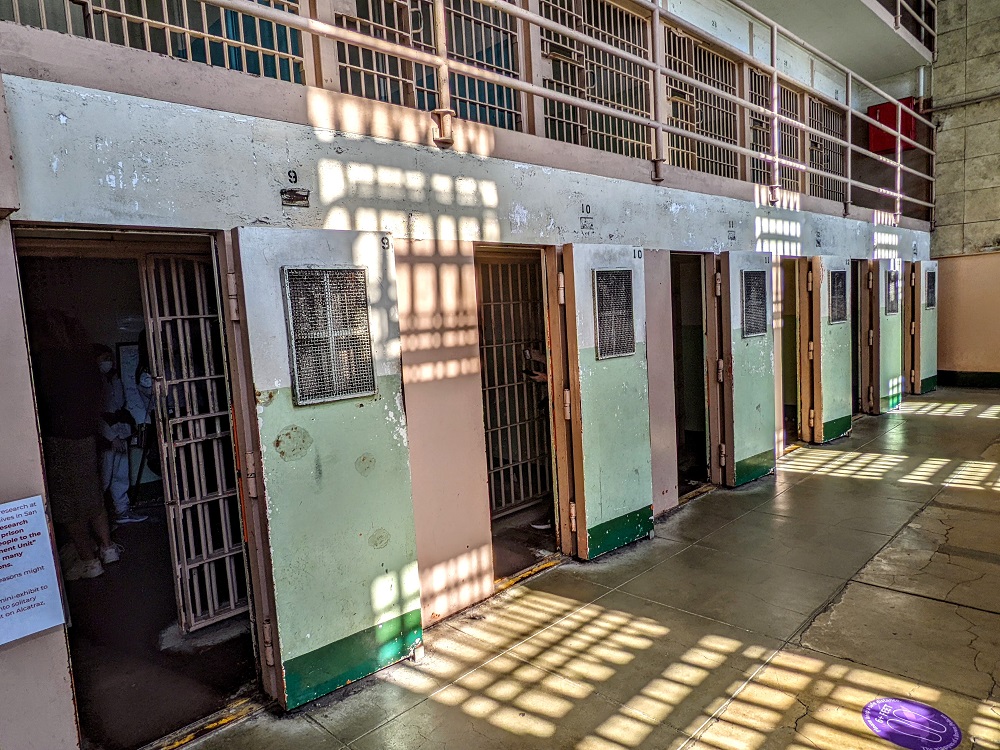
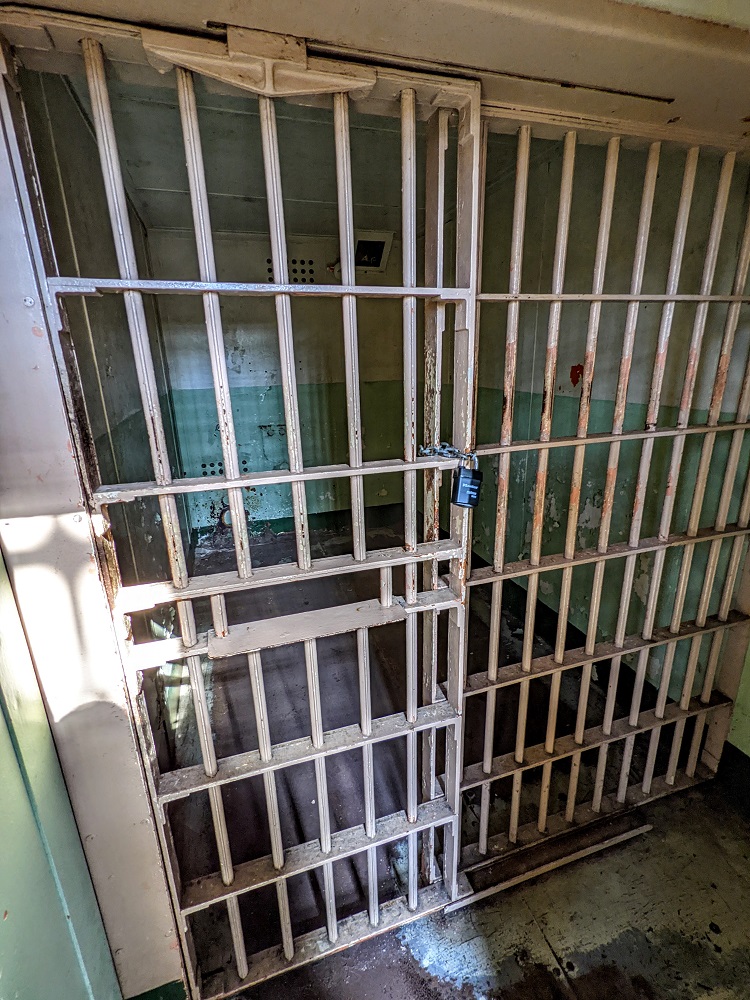
At the end of D Block was the prison library. Literate prisoners at Alcatraz would sometimes read up to 100 books per year.
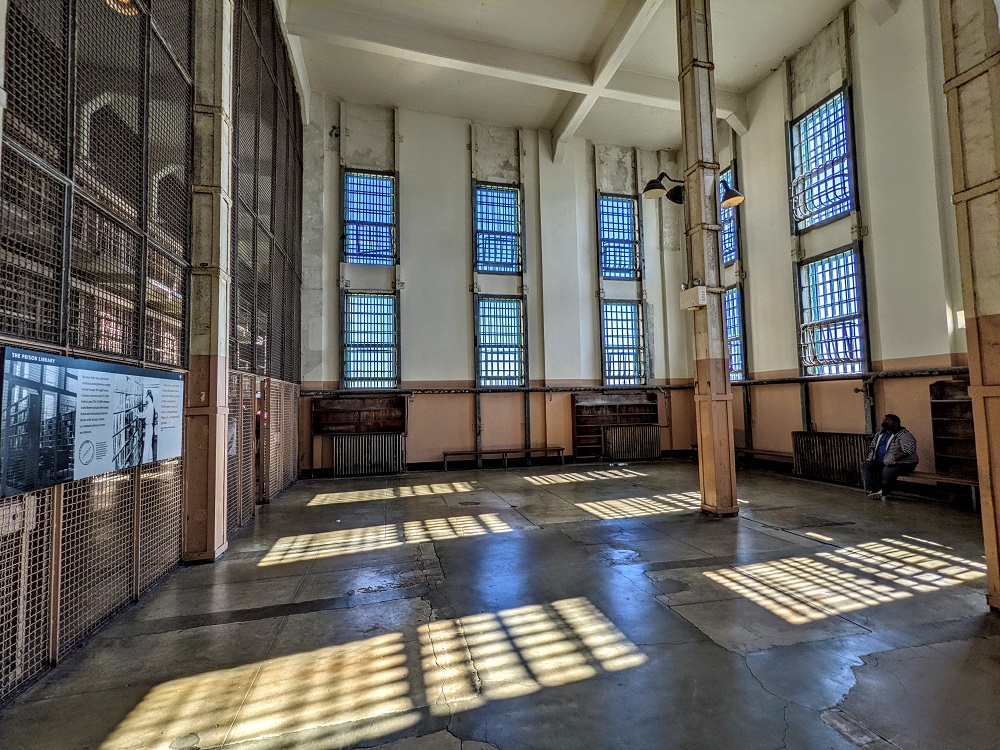
The cell block after the library was considered the most desirable in the entire prison. The reason why is because it was the most sunny which meant both more daylight and warmer living conditions.

Alcatraz was a maximum security federal prison which meant it received some of the most high profile prisoners in the country – here are some of them.
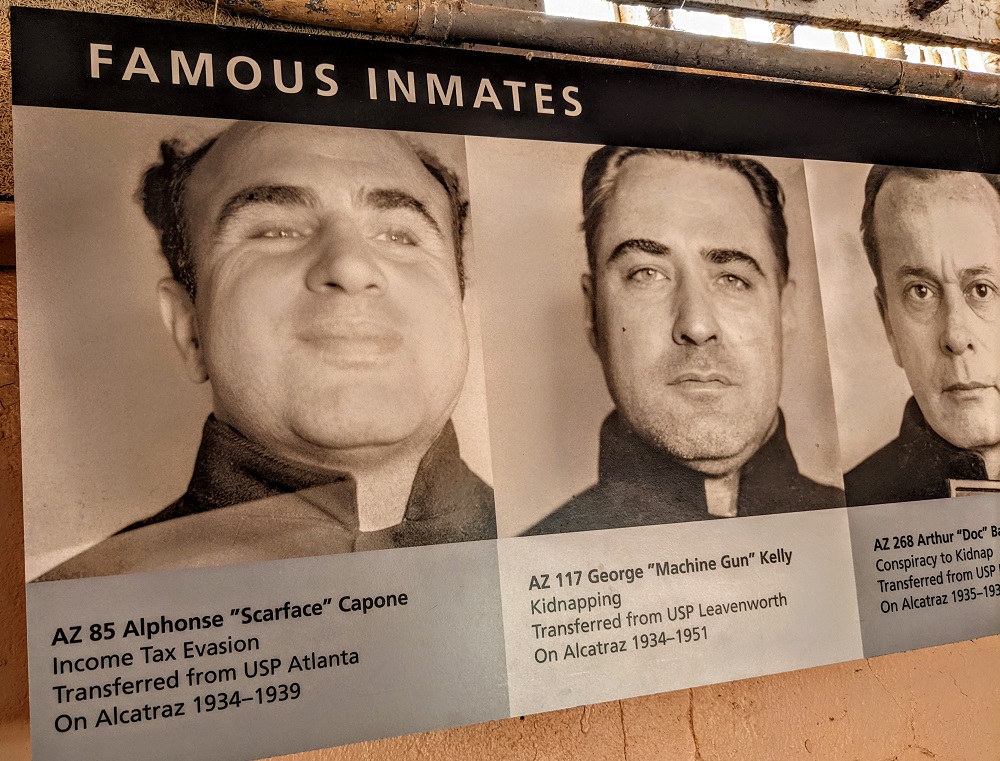
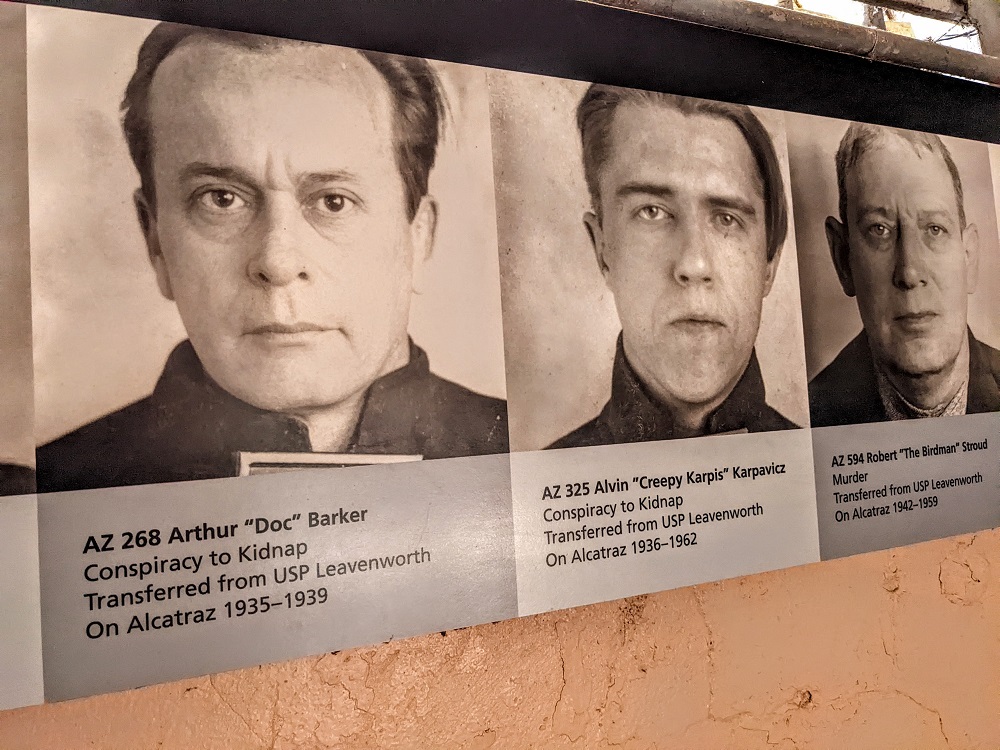
Trusted inmates were allowed to work in the prison’s kitchen. Prisoners received three meals a day and were given 20 minutes to eat per mealtime.
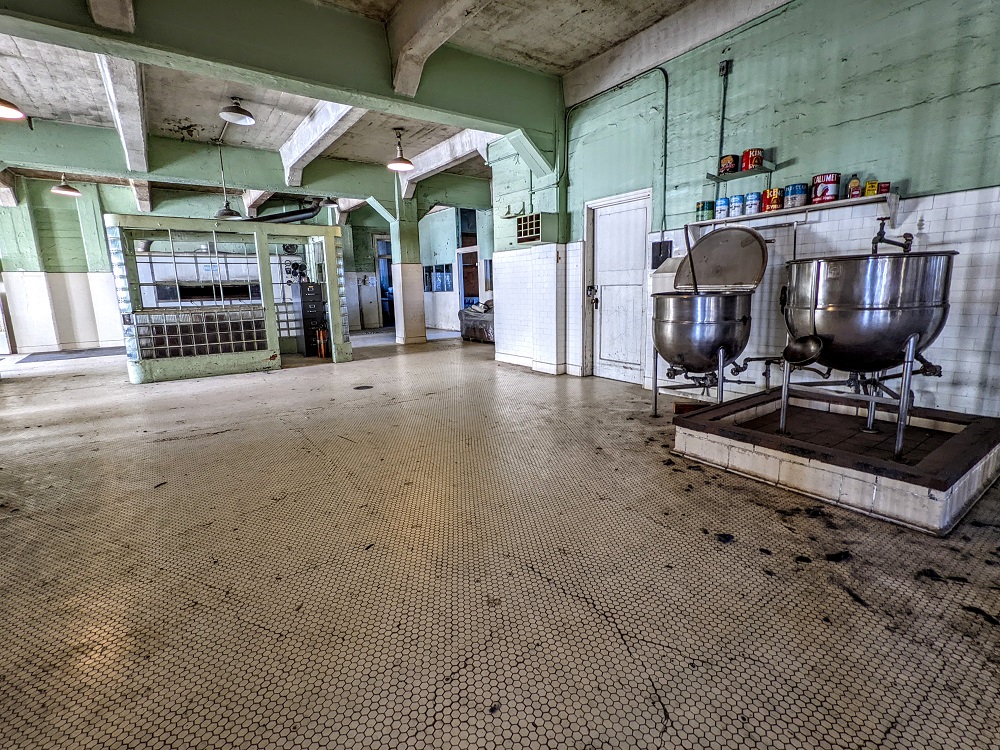
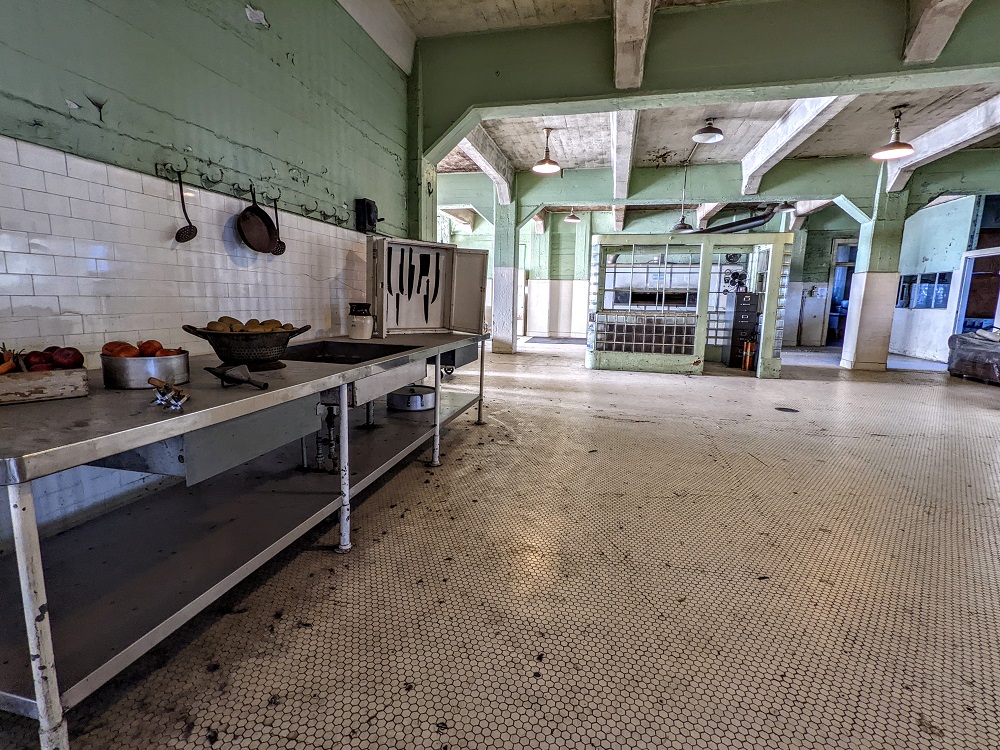
Trusted inmates working in the kitchen weren’t too trusted though. Guards had concerns about their access to knives, so those were kept in a locked container with a silhouette behind where each knife was to be placed, thereby making it easy to identify if a knife was being used or missing.

Escape From Alcatraz
Considering one of the reasons why Alcatraz is so famous is because of the multiple escape attempts from there, there’s surprisingly little information provided about those who tried to escape the island.
An exception is when you get to Michigan Avenue on B Block where you learn about an escape attempt in June 1962 which inspired the movie Escape From Alcatraz starring Clint Eastwood.
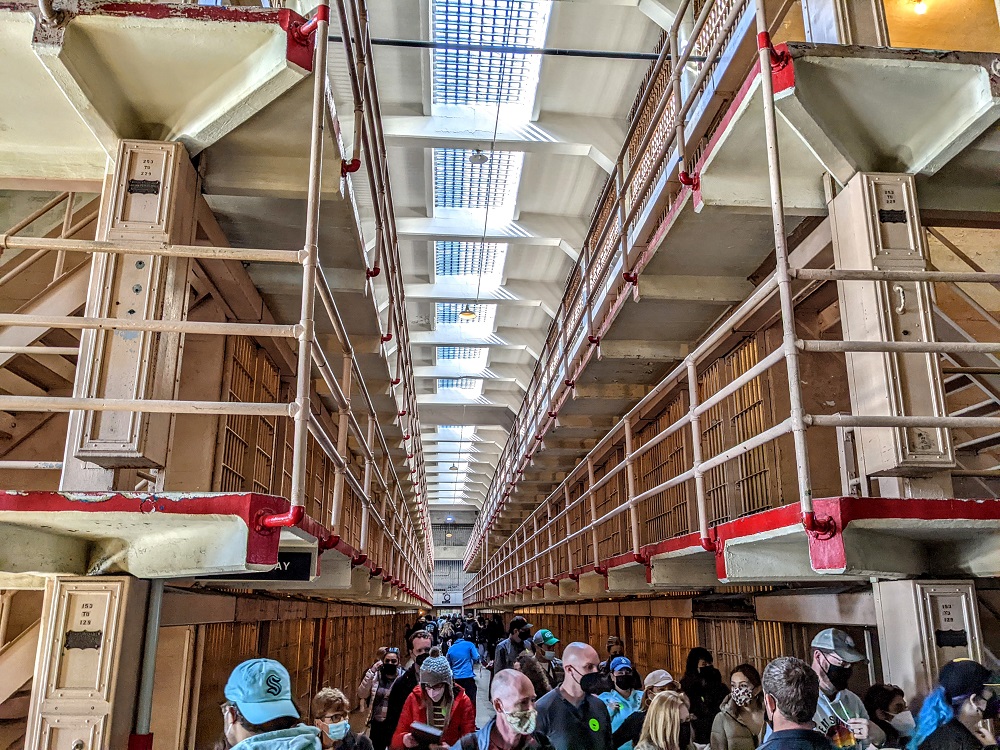
Three prisoners – Frank Morris and brothers Clarence Anglin and John Anglin – had managed to create holes in the back of their cells large enough to get through. Those holes led to the utility corridor behind their cells; from there they climbed up to the roof and escaped on a raft, never to be seen again.
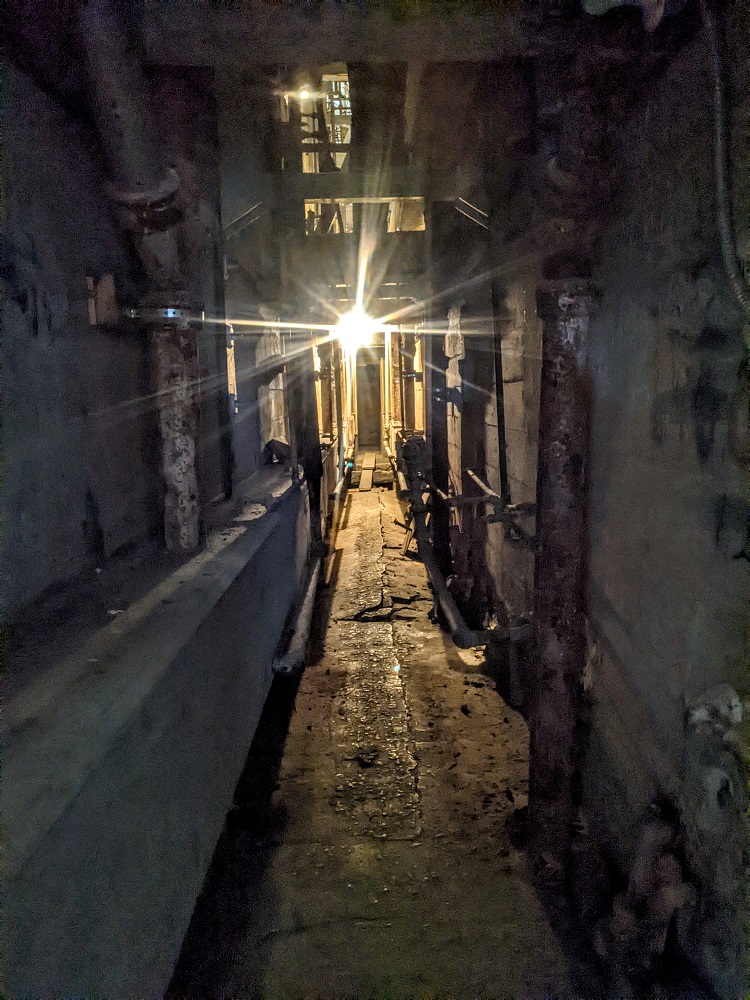
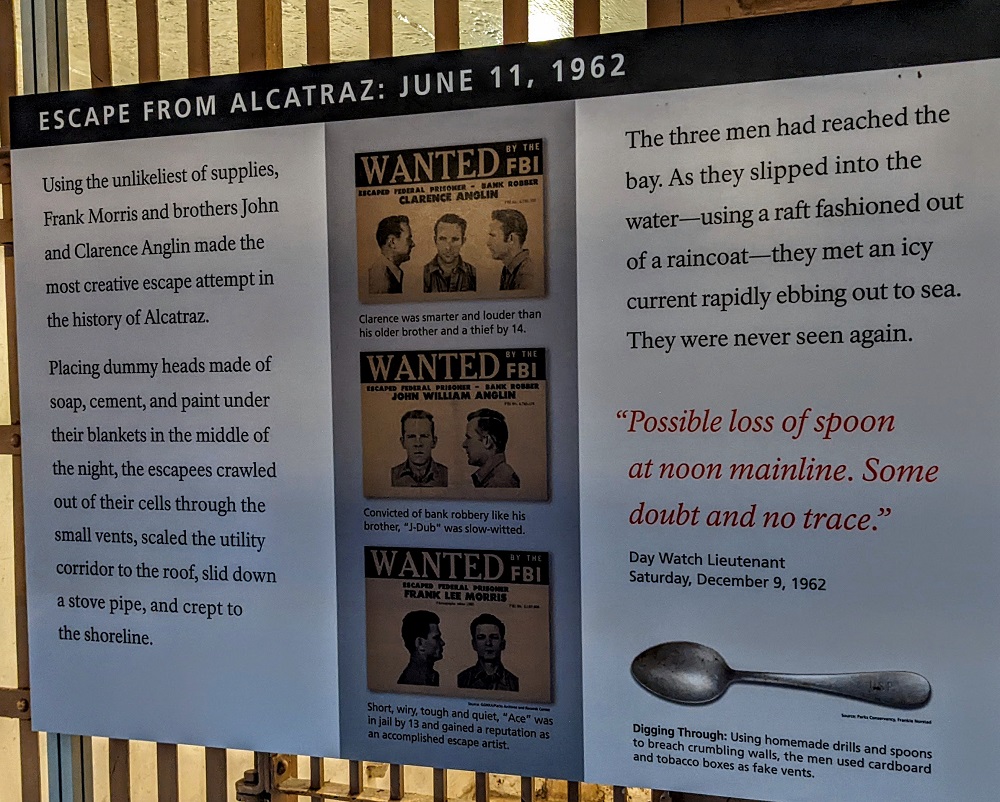
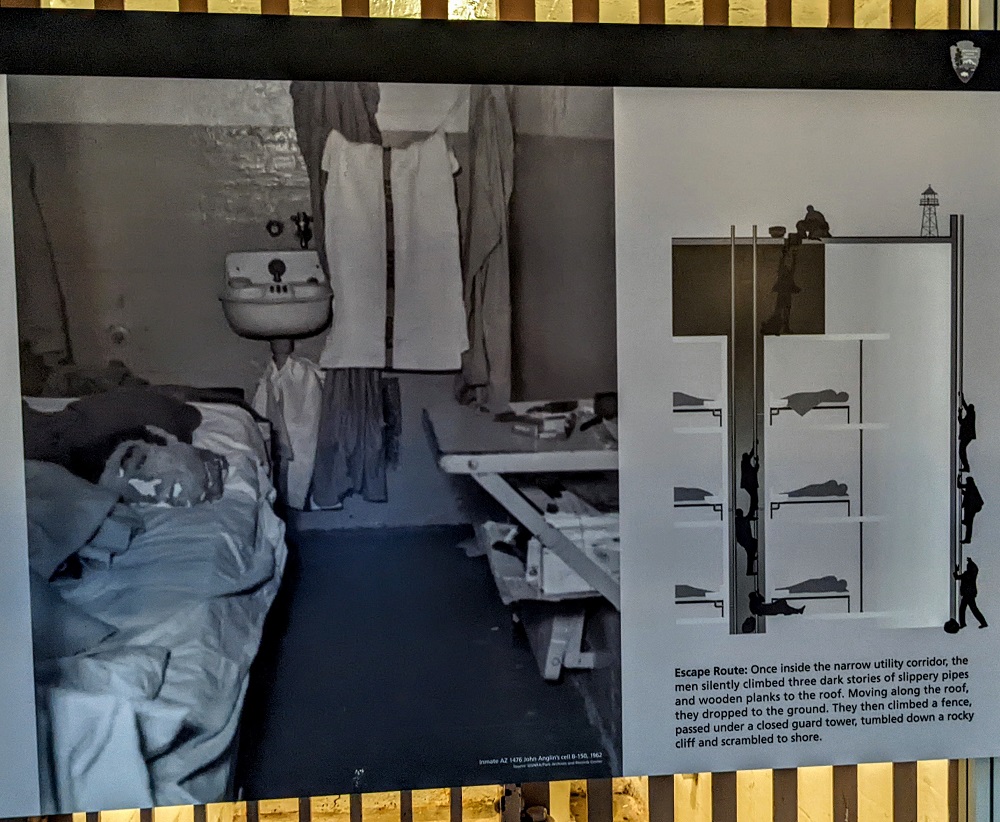
Guards didn’t notice them missing from their bed that night because they’d been able to create papier-mâché heads using all kinds of materials they’d managed to get their hands on, including hair collected from the prison’s barber shop.
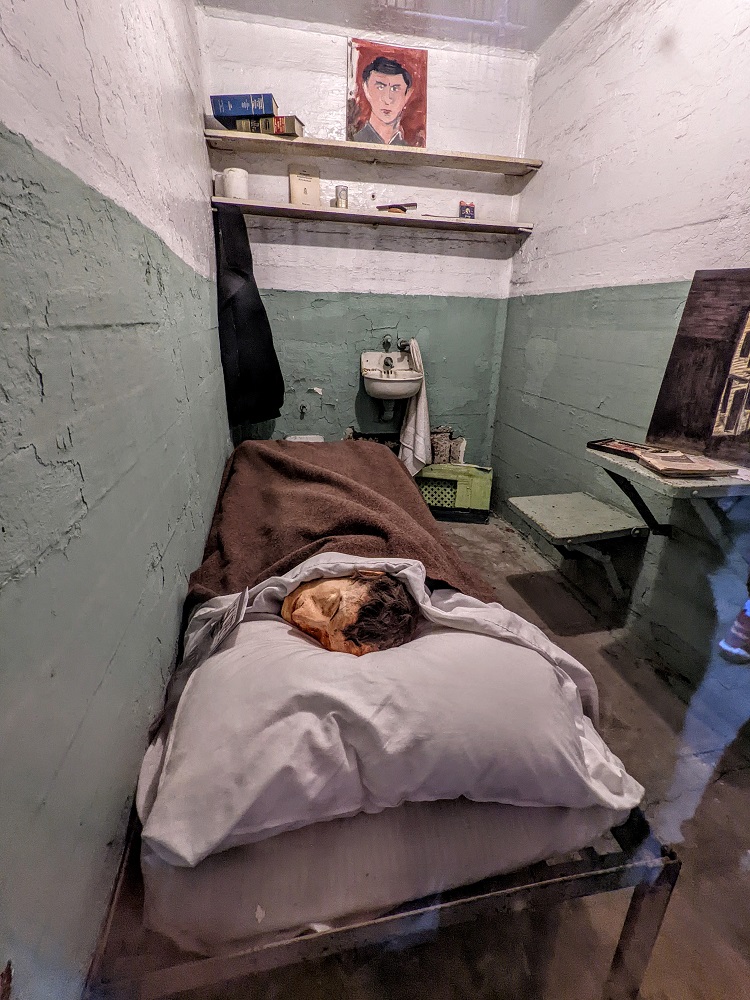
Authorities came to believe that the escapees passed away in the water when escaping Alcatraz Island, but there were numerous sightings of them in the following decades. I highly recommend reading more about the escape here because it’s a fascinating and exciting story, most of which isn’t covered when touring Alcatraz.
Alcatraz Island
The self-guided cellhouse audio tour isn’t the only thing to do on the island – there’s a lot more to see.
When you arrive on the island, the walkway up to the cellhouse takes you through the Guardhouse and Sally Port.
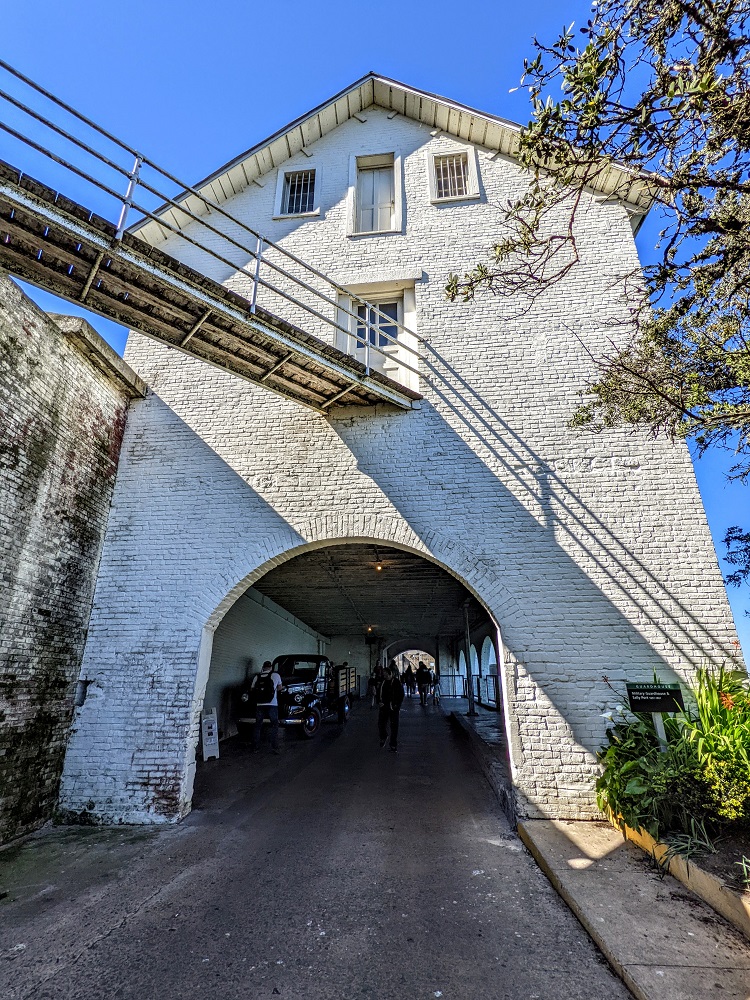
Before becoming the site of a federal penitentiary, Alcatraz Island was used as a fort due to its strategic position.
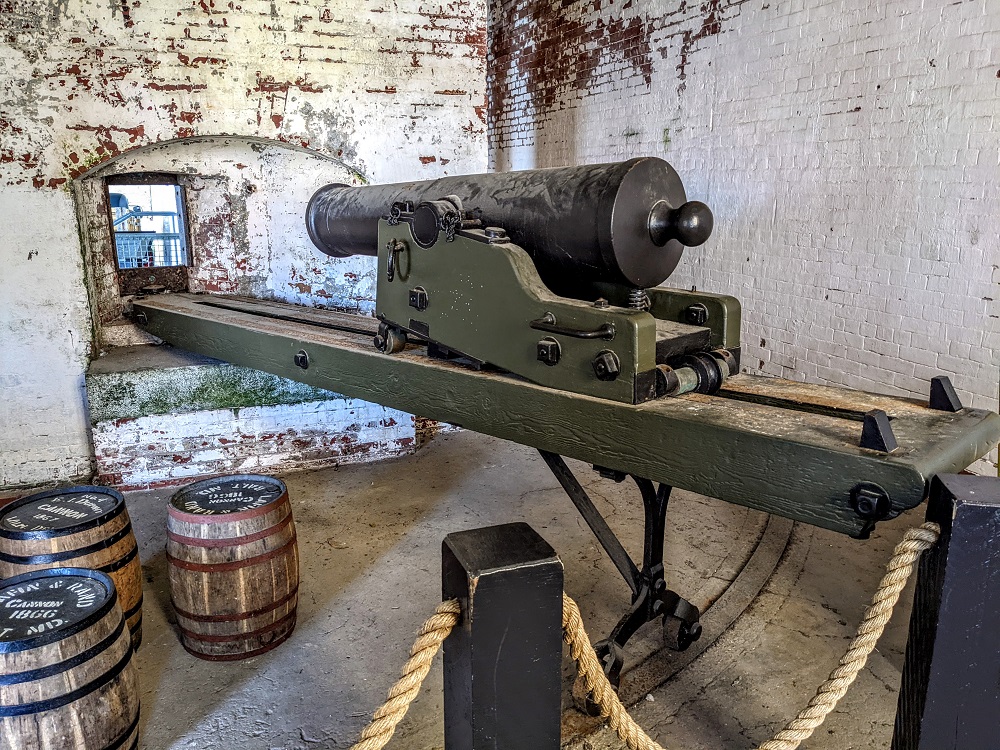
It was subsequently used as a military prison. There were a number of reasons why soldiers were sent there, with some of them being conscientious objectors. Those particular prisoners faced a dilemma though because inmates were expected to support the war effort through their labors each day.
Some of the conscientious objectors therefore refused to participate in the required work as they’d be helping the war effort, despite knowing that they’d be punished further as a result. In addition to getting more time added to their sentences through further court martials, the Commandant tried to make life as miserable as possible for them in prison which often included inhumane treatment.
One method used was to handcuff them to their cell windows for seven hours a day with their arms above their heads. When the ACLU-equivalent of the day learned about this, they protested this treatment and the Commandant was ordered to stop treating the conscientious objectors in that way.
That wasn’t the end of the inhumane treatment though. He had walls erected in their cells that created an enclosed space measuring only 23 inches by 12 inches, with their cell door in front of them. This meant prisoners put in those coffin-like conditions had no room to move, as evidenced in the image below. They were forced to stand in those conditions for seven hours a day. Civil rights campaigners eventually learned of this too and, after getting details of prisoner treatment in newspapers, the Commandant was forced to stop this method of torture as well.
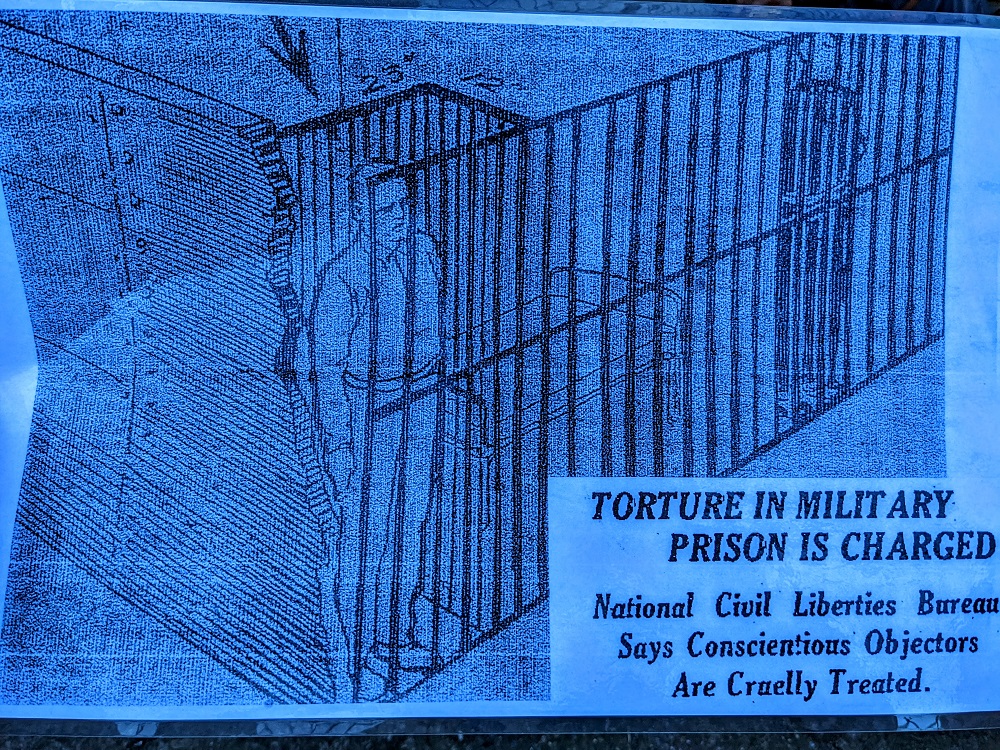
Some buildings have gone to ruin over time, such as what was most recently the Penitentiary Social Hall for guards from 1934-1963. Before that it served as the Military Post Exchange from 1910-1933.
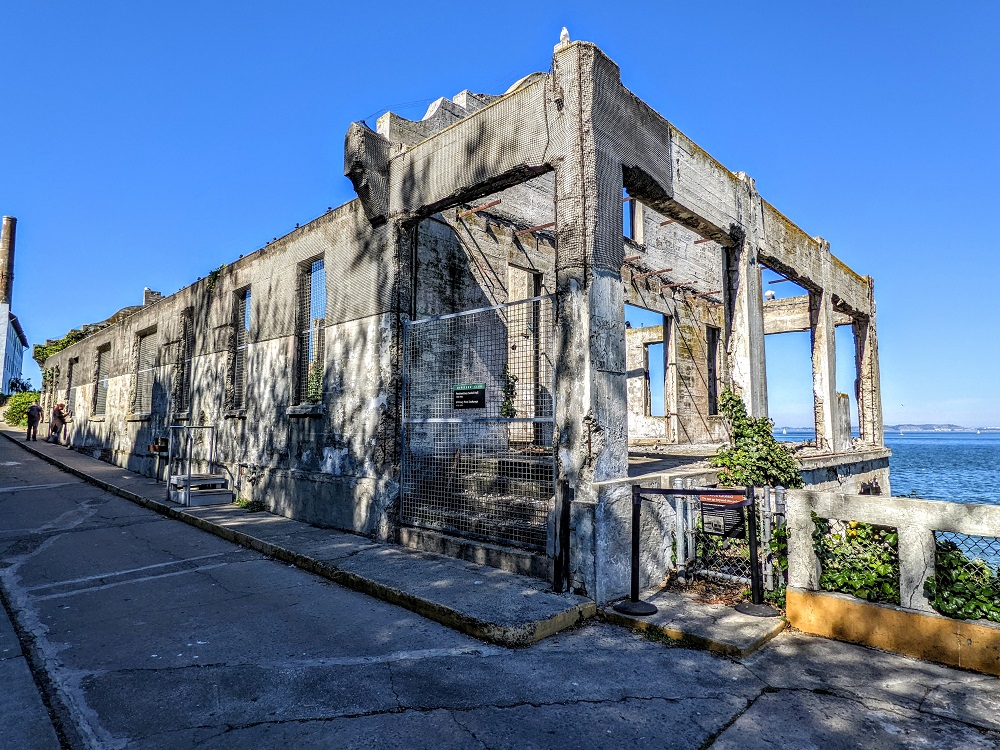
The large barracks building on the island once accommodated soldiers. When Alcatraz Island become home to a federal prison, those barracks were used as housing for prison guards and their families. Yep – guards, their wives and children all lived on Alcatraz!
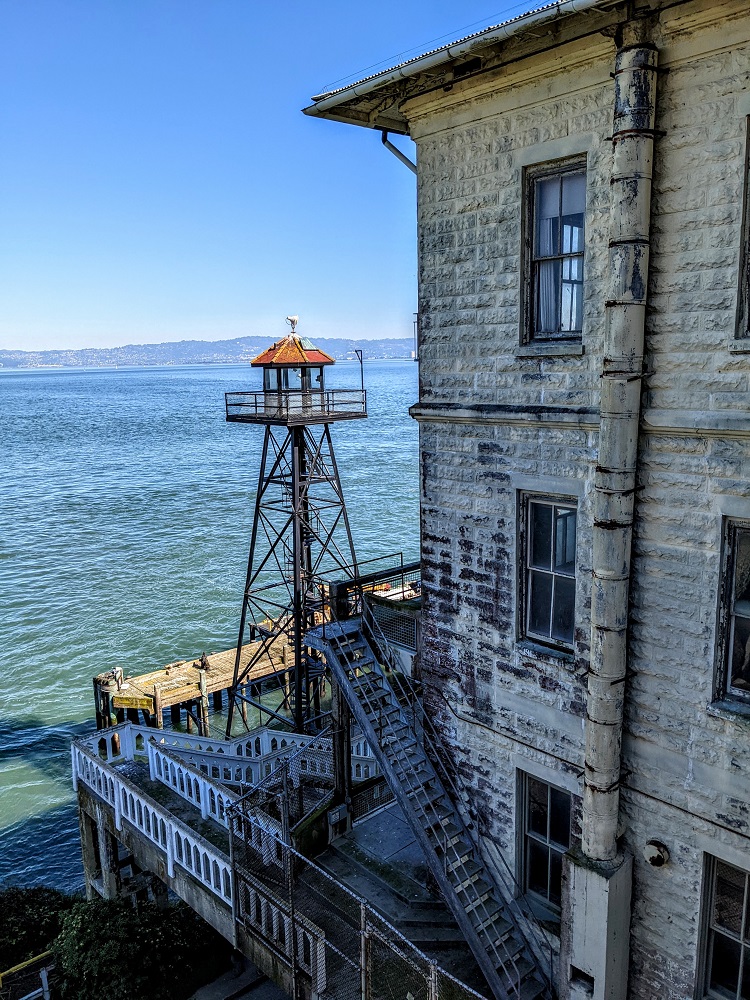
The island doesn’t have its own water supply. Water therefore had to be brought across from the mainland and was once stored in ground tanks. A water tower was built in 1940-41 which could contain up to 250,000 gallons.
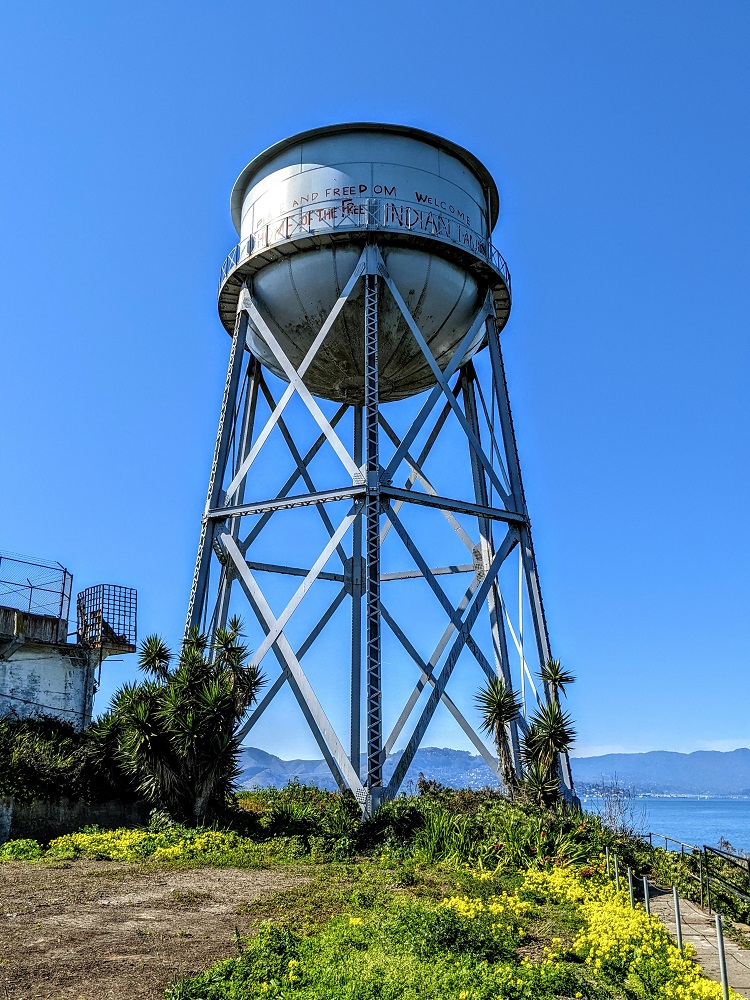
Several years after the prison closed on March 21, 1963, Native Americans occupied the island to reclaim it as their own. The Occupation of Alcatraz lasted just over 1.5 years and the water tower continues to bear witness to the occupation.
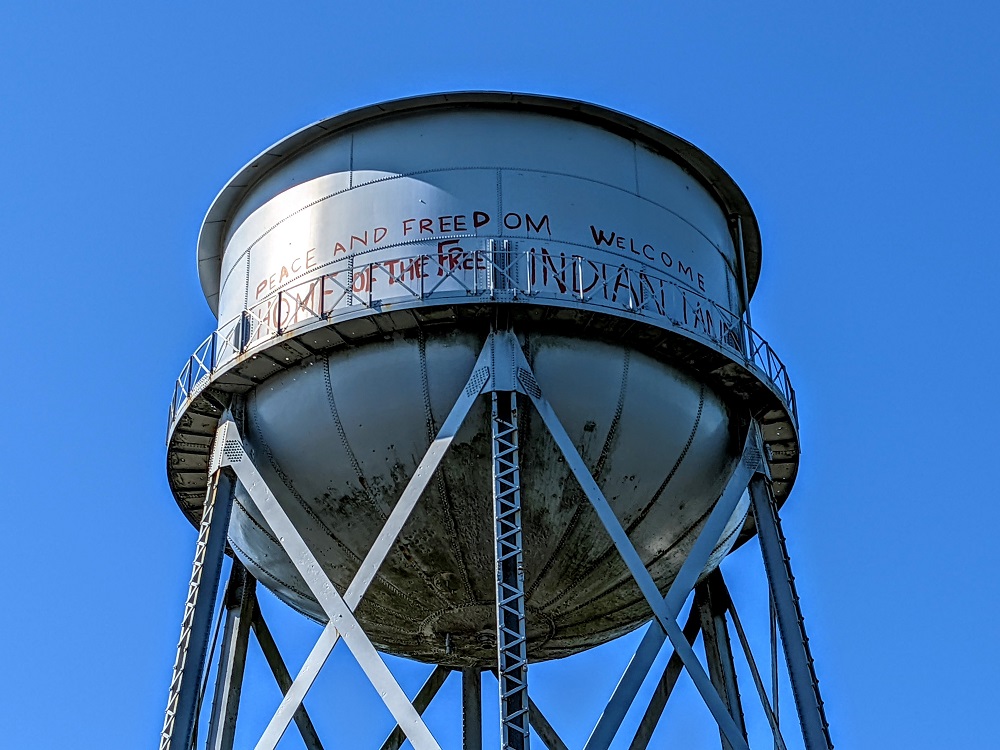
The water tower is the tallest structure on the island. Another tall structure is the Alcatraz Lighthouse that sits atop the island.
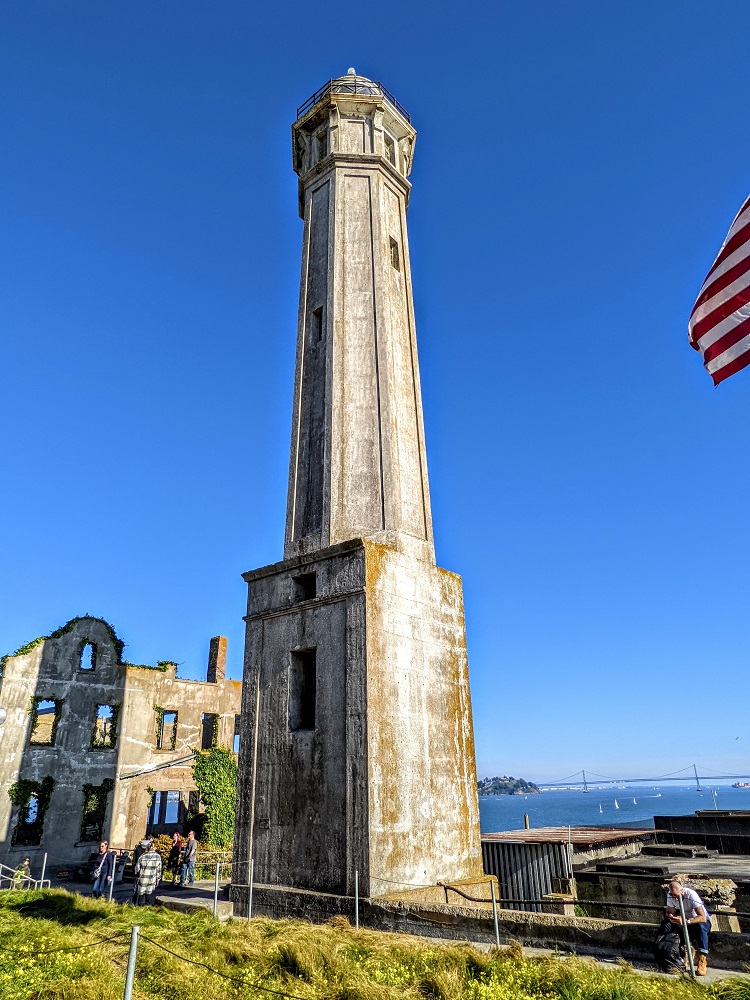
A much smaller building is the island’s morgue. The morgue was rarely used because bodies were always transported immediately to the mainland unless the last boat of the day was missed.
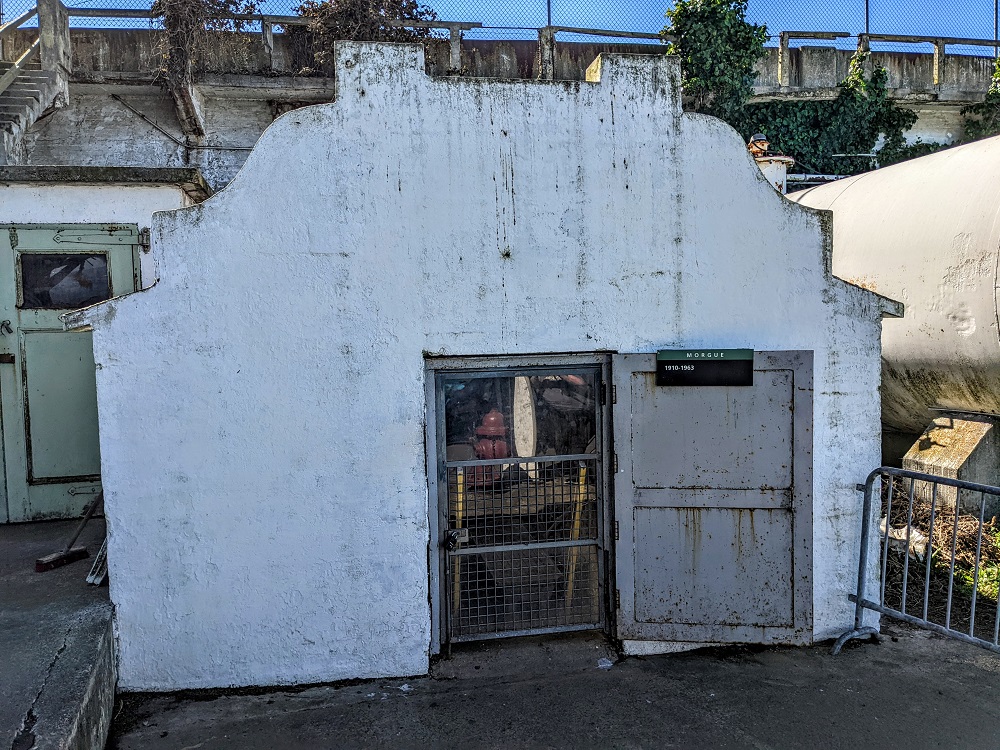
No prisoners were executed at Alcatraz Federal Penitentiary, although there were eight murders and five suicides.
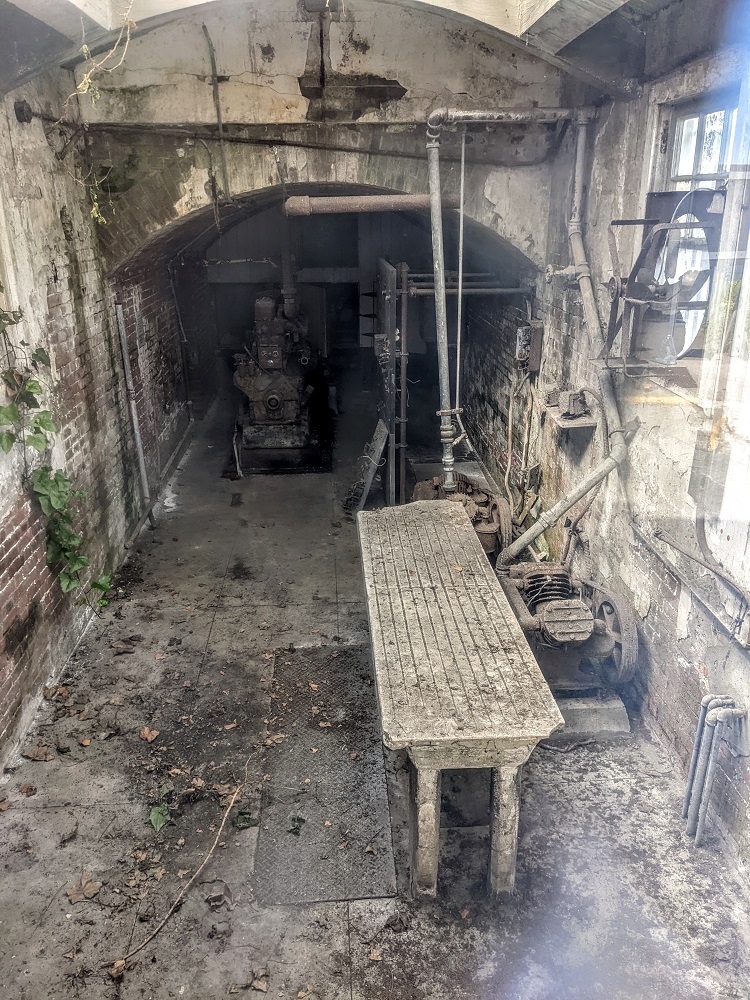
There are some paths and trails you can explore, giving you different views of the island and its buildings.
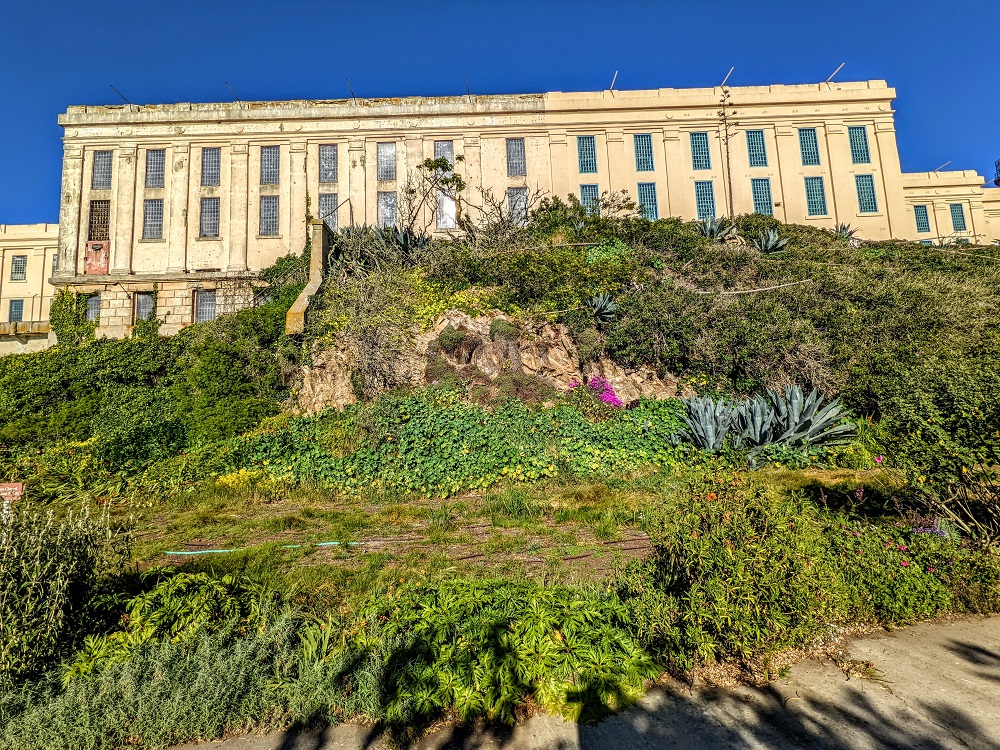
The top of the island also provides some beautiful views of San Francisco.
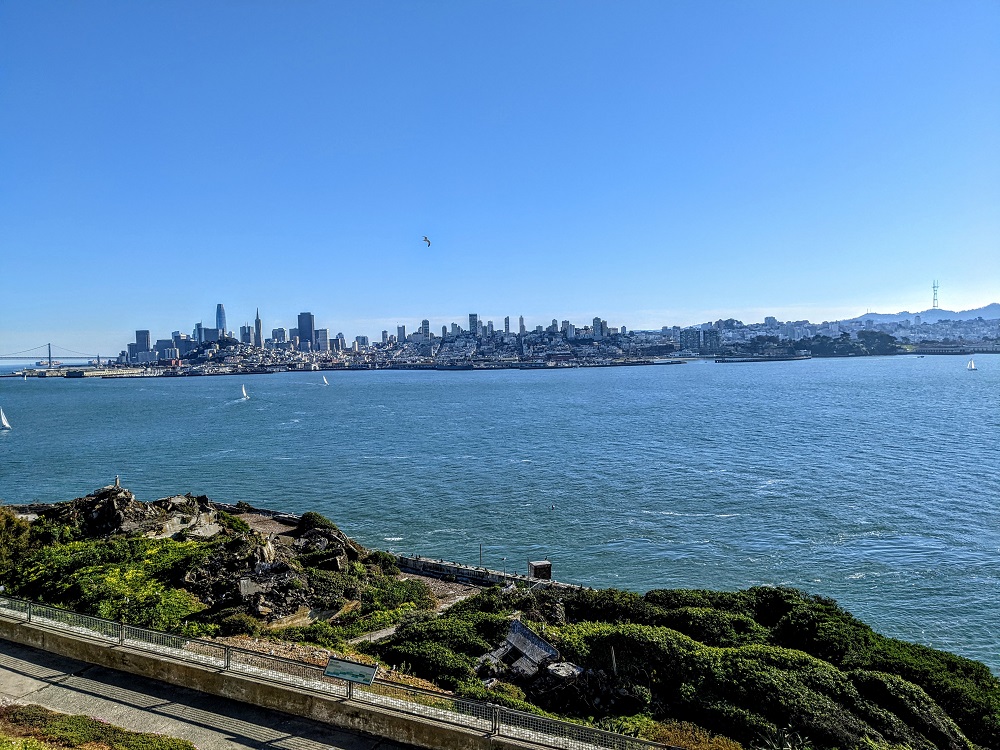
One of the last things we checked out was an exhibit called Mass Incarceration In The United States. As its title suggests, it provides information about how many people are in jail or prison in the US.
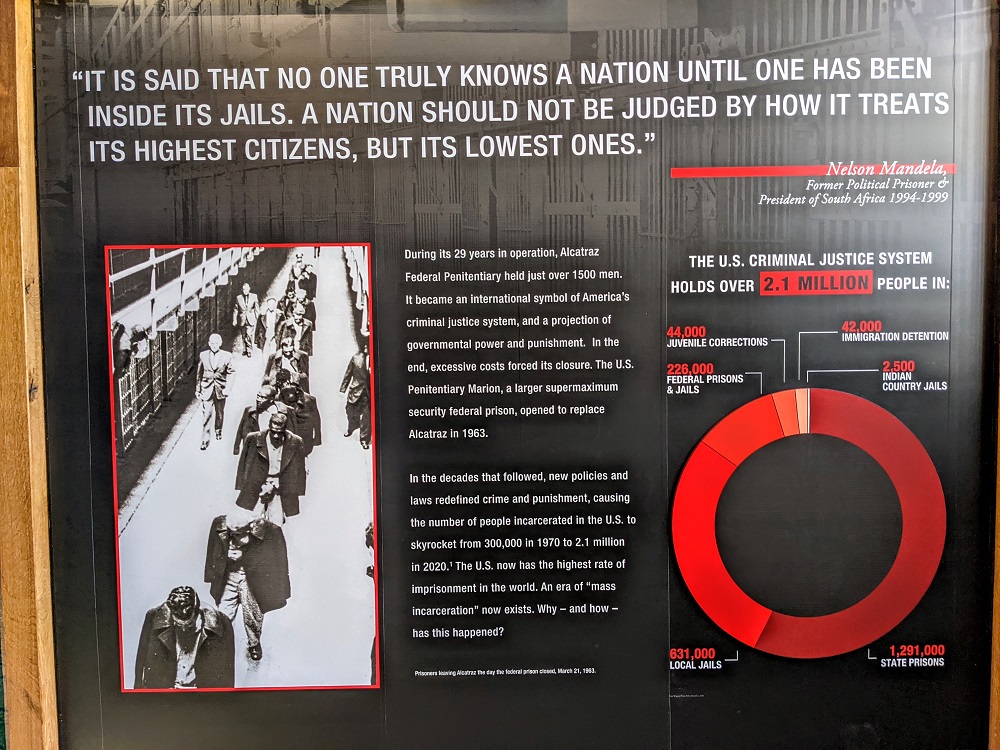
One of the displays shows how high the incarceration rate is in the US. The larger the sphere, the higher the incarceration rate is compared to the rest of the world. The US comes top, with 698 people per 100,000 currently being incarcerated. The next closest are Russia and Rwanda at 442 and 439 people per 100,000 respectively.
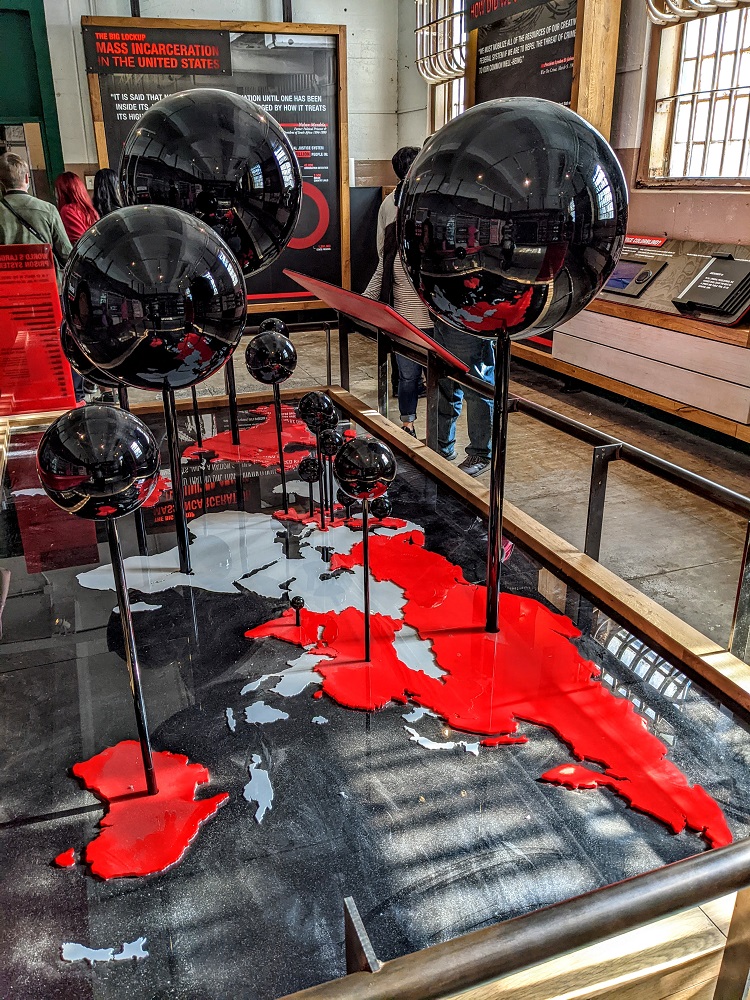
Final Thoughts
Alcatraz is a fascinating place and so is well worth a visit if you ever spend any time in San Francisco. While it was a little disappointing that there wasn’t more information provided about the various different escape attempts, there was still plenty of stuff to keep us interested for the 2.5 hours that we were there.
[…] were a few things we knew we wanted to do in San Francisco. See the Golden Gate Bridge, visit Alcatraz, get something to eat or drink at Ghirardelli and check out Fisherman’s […]